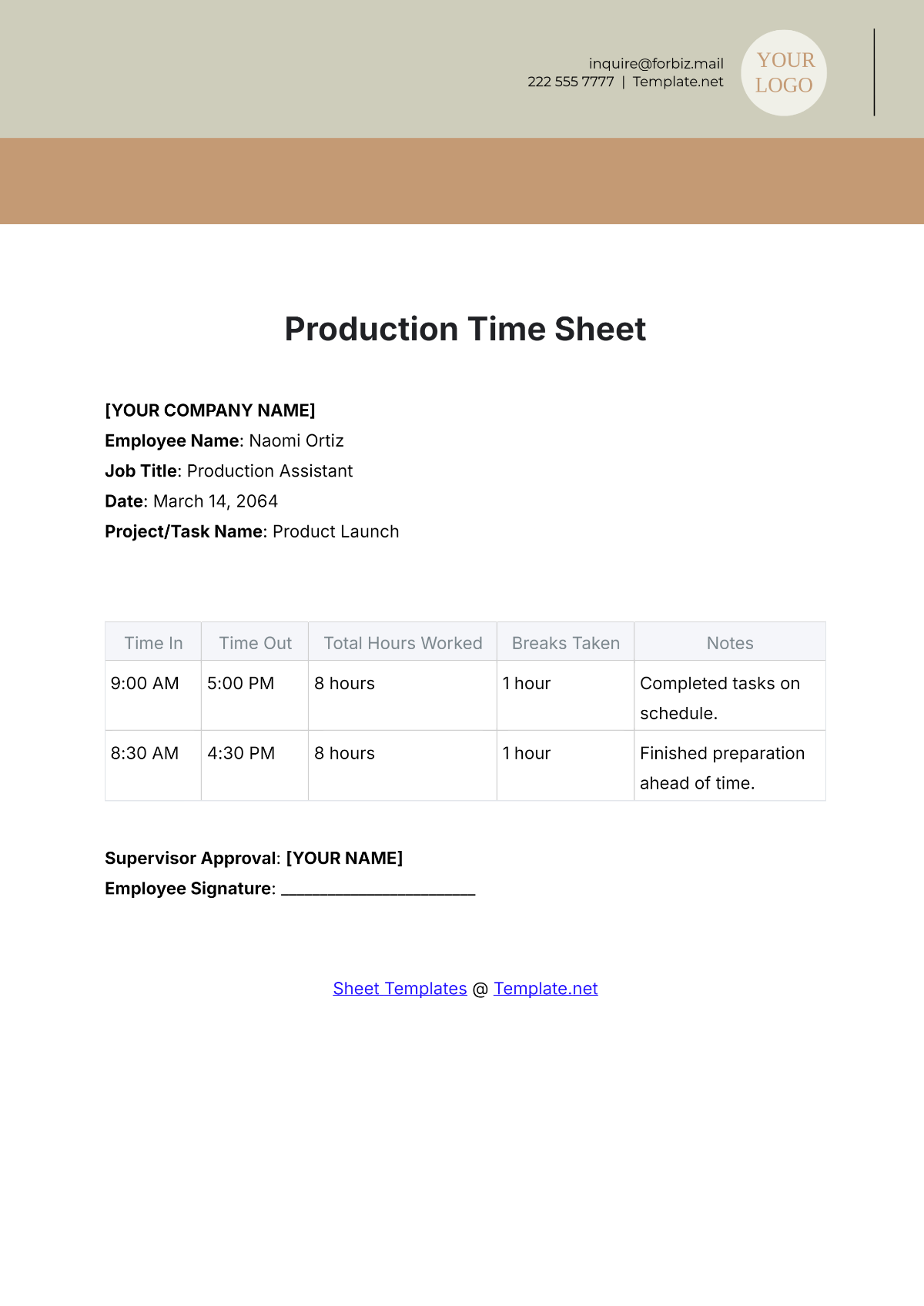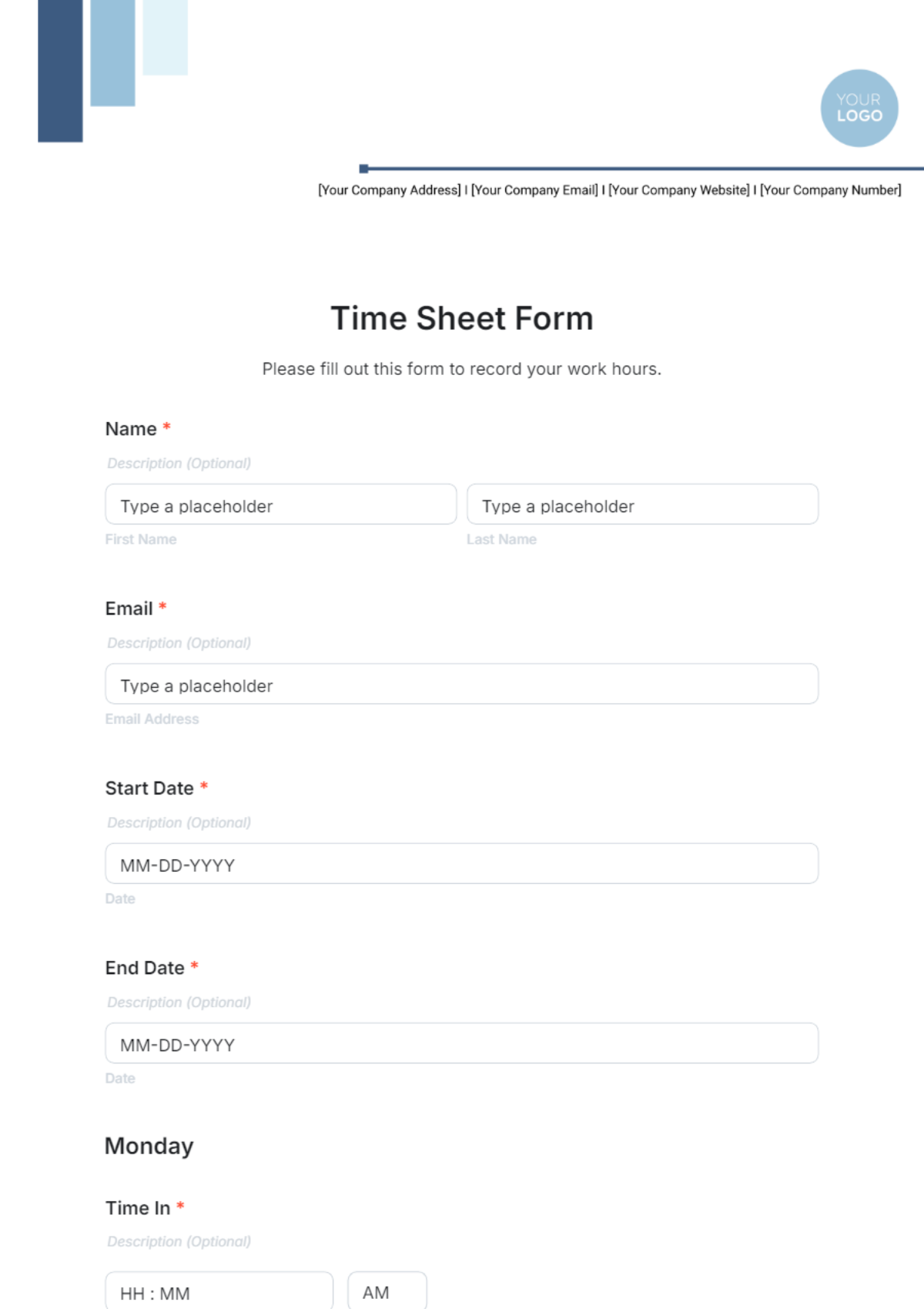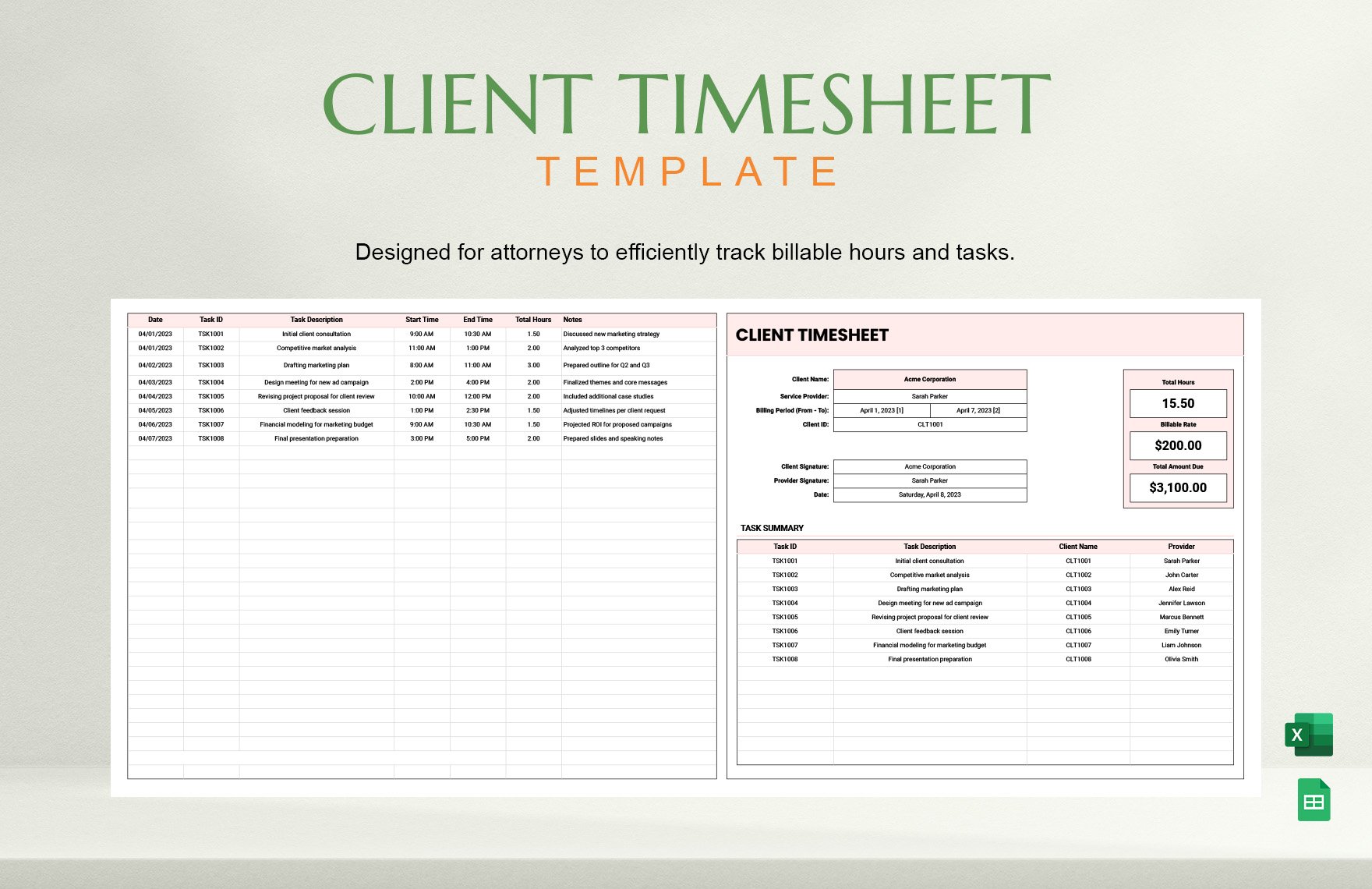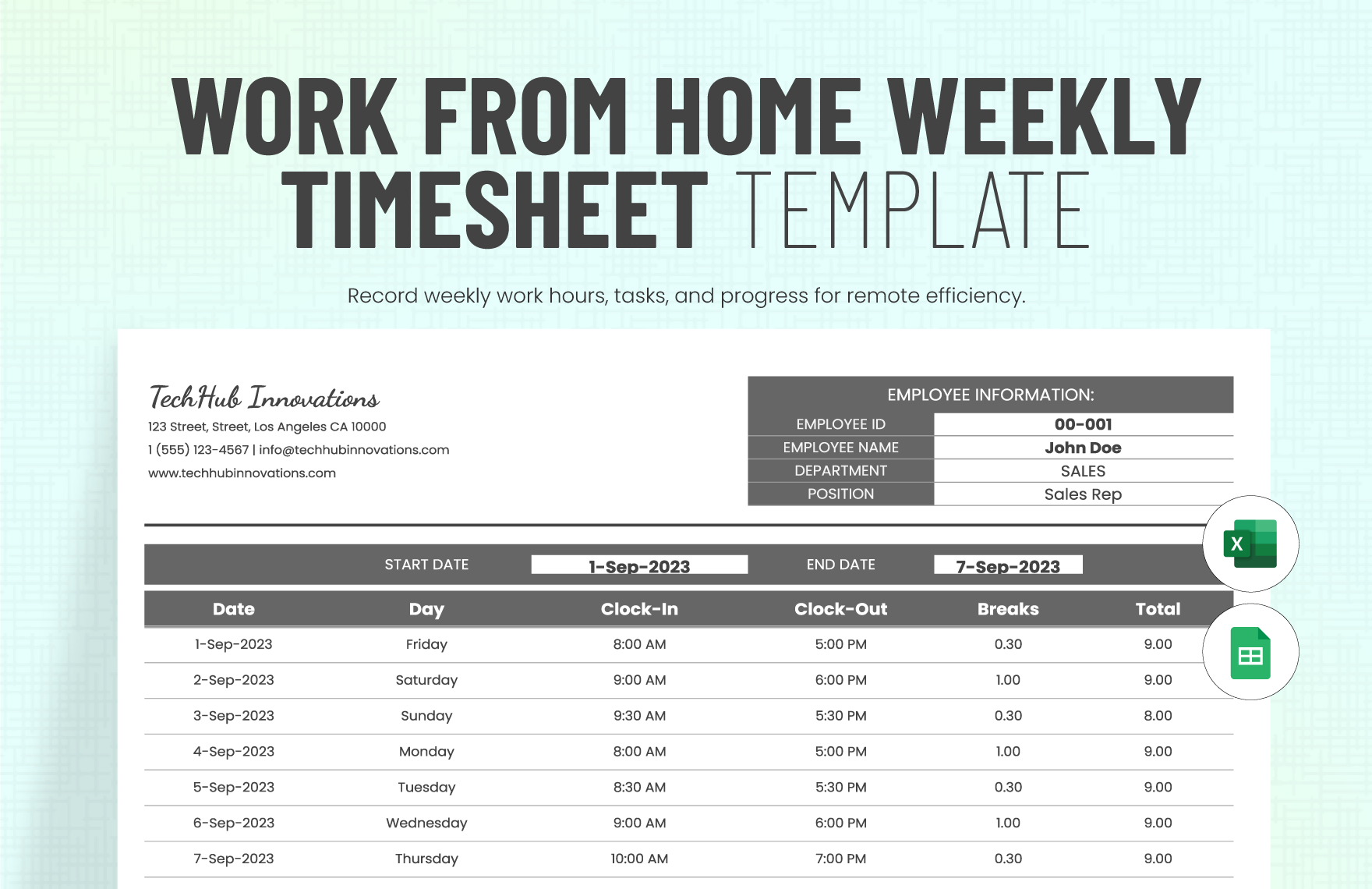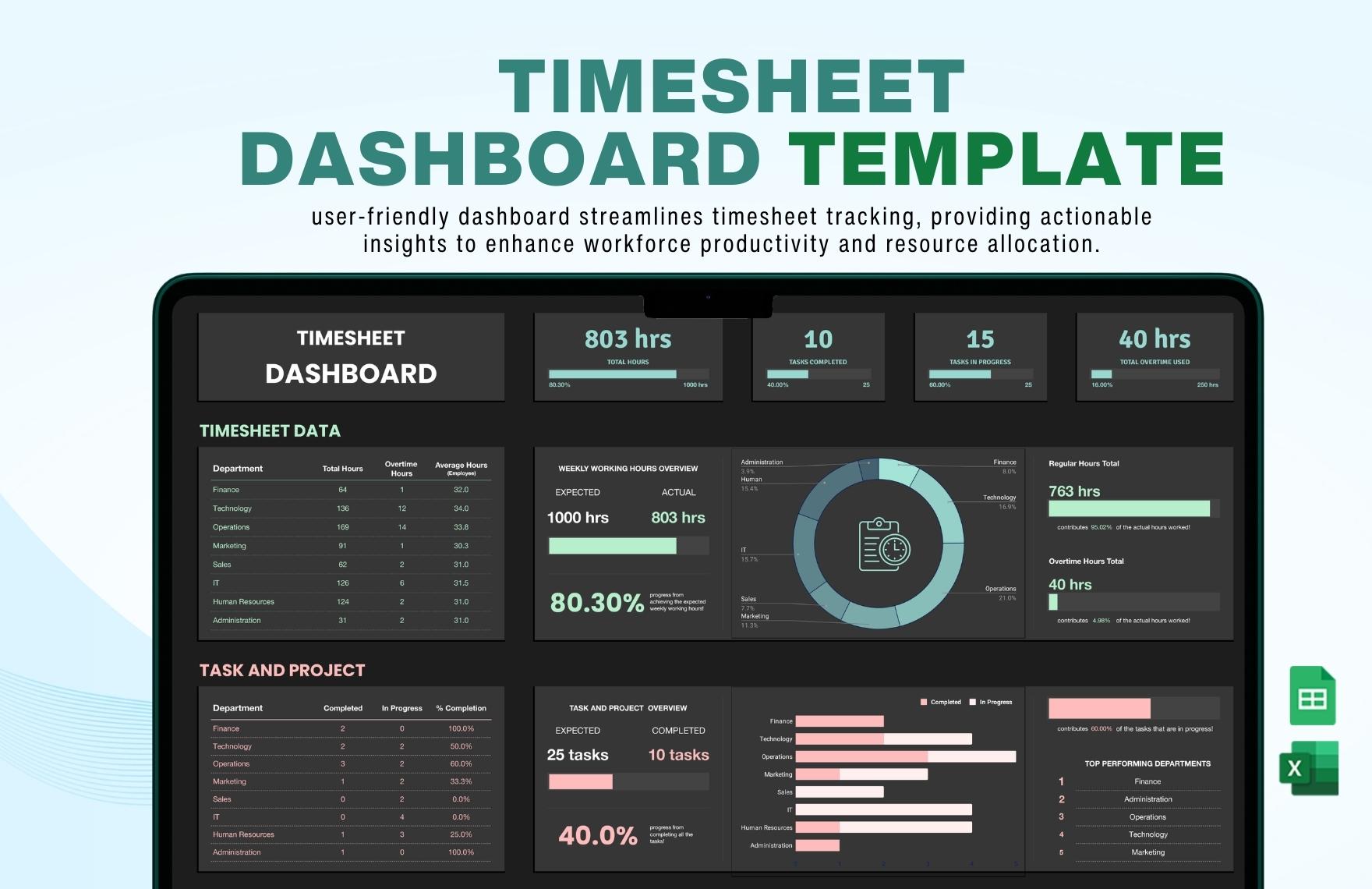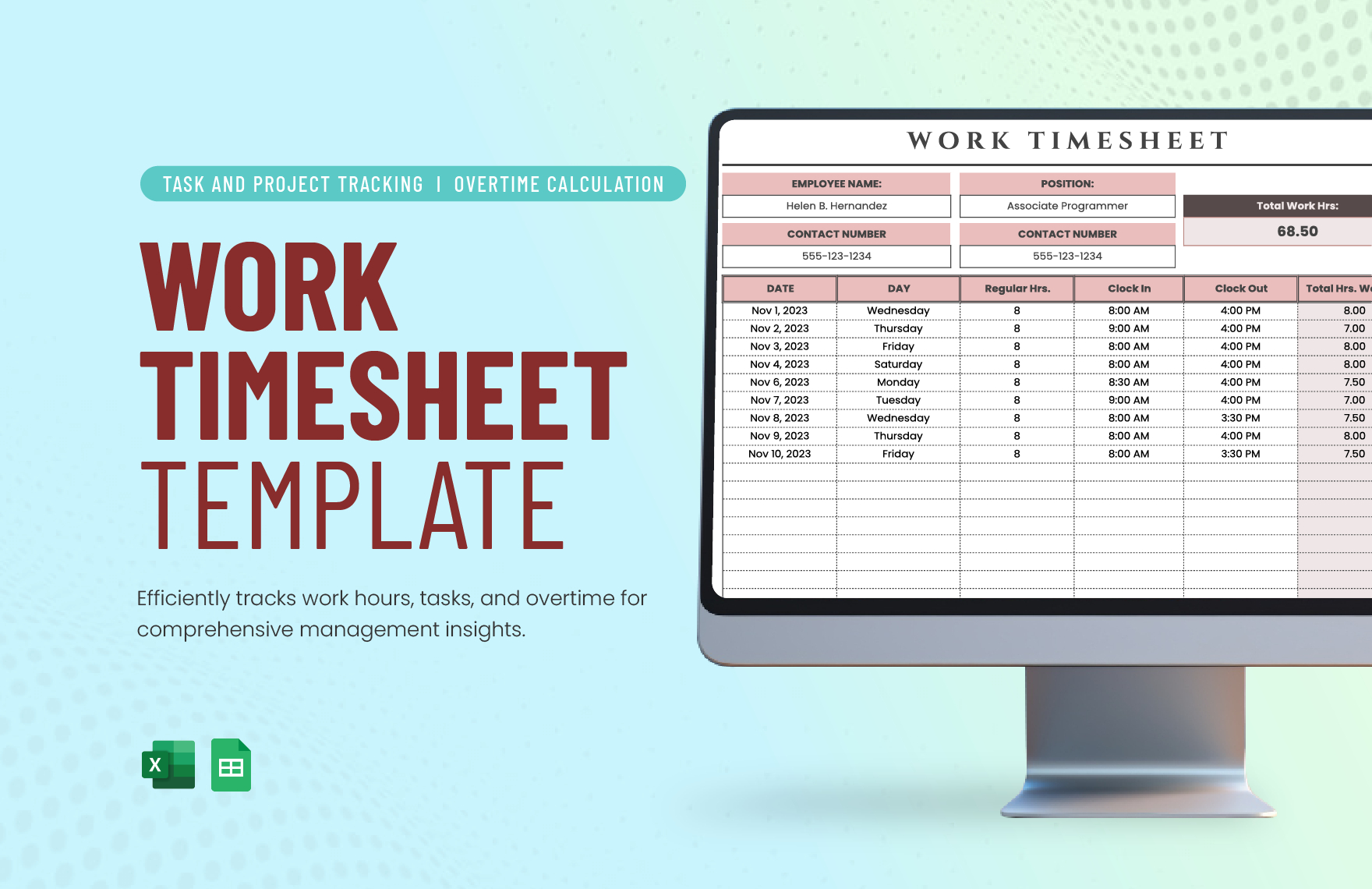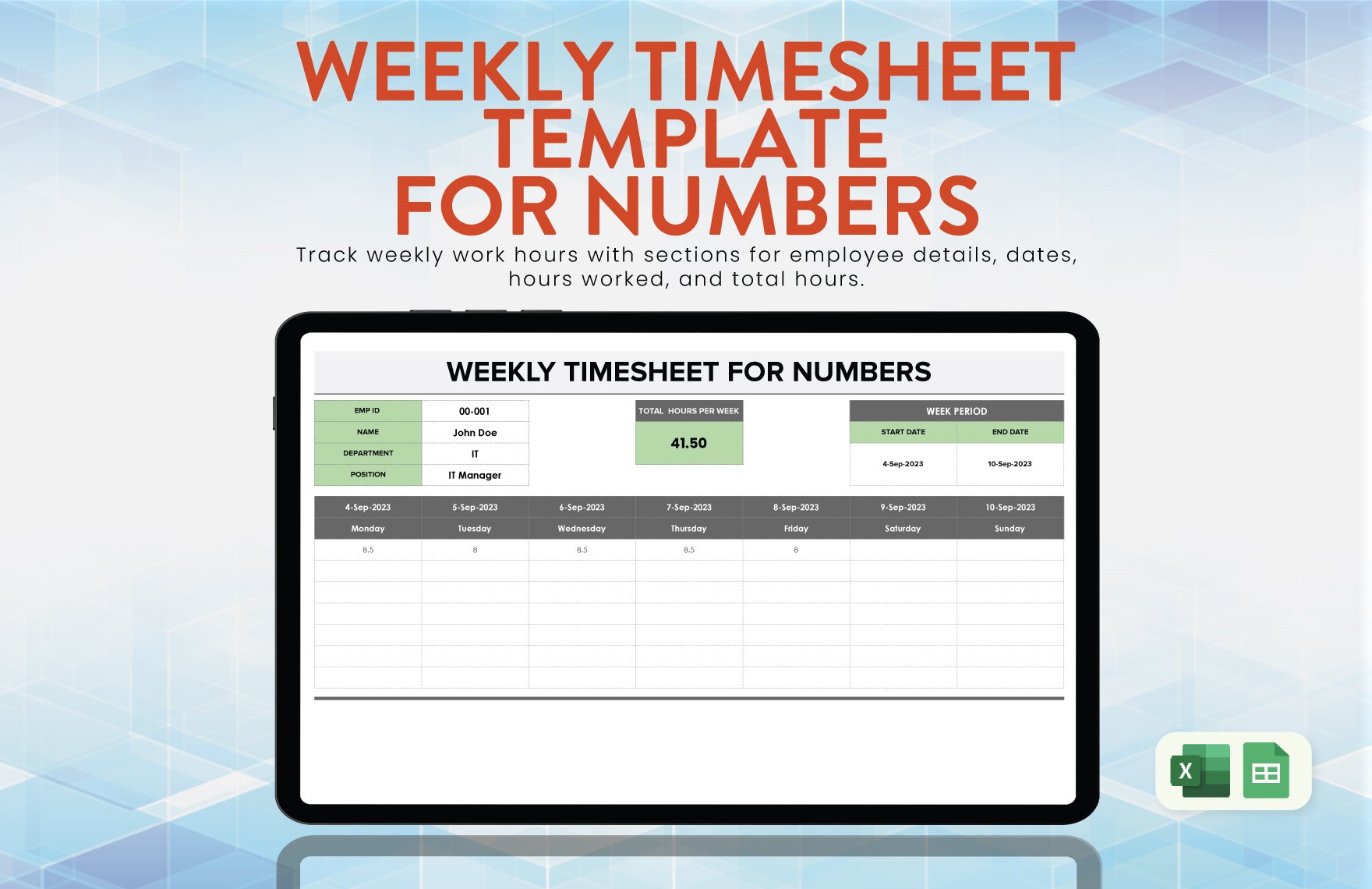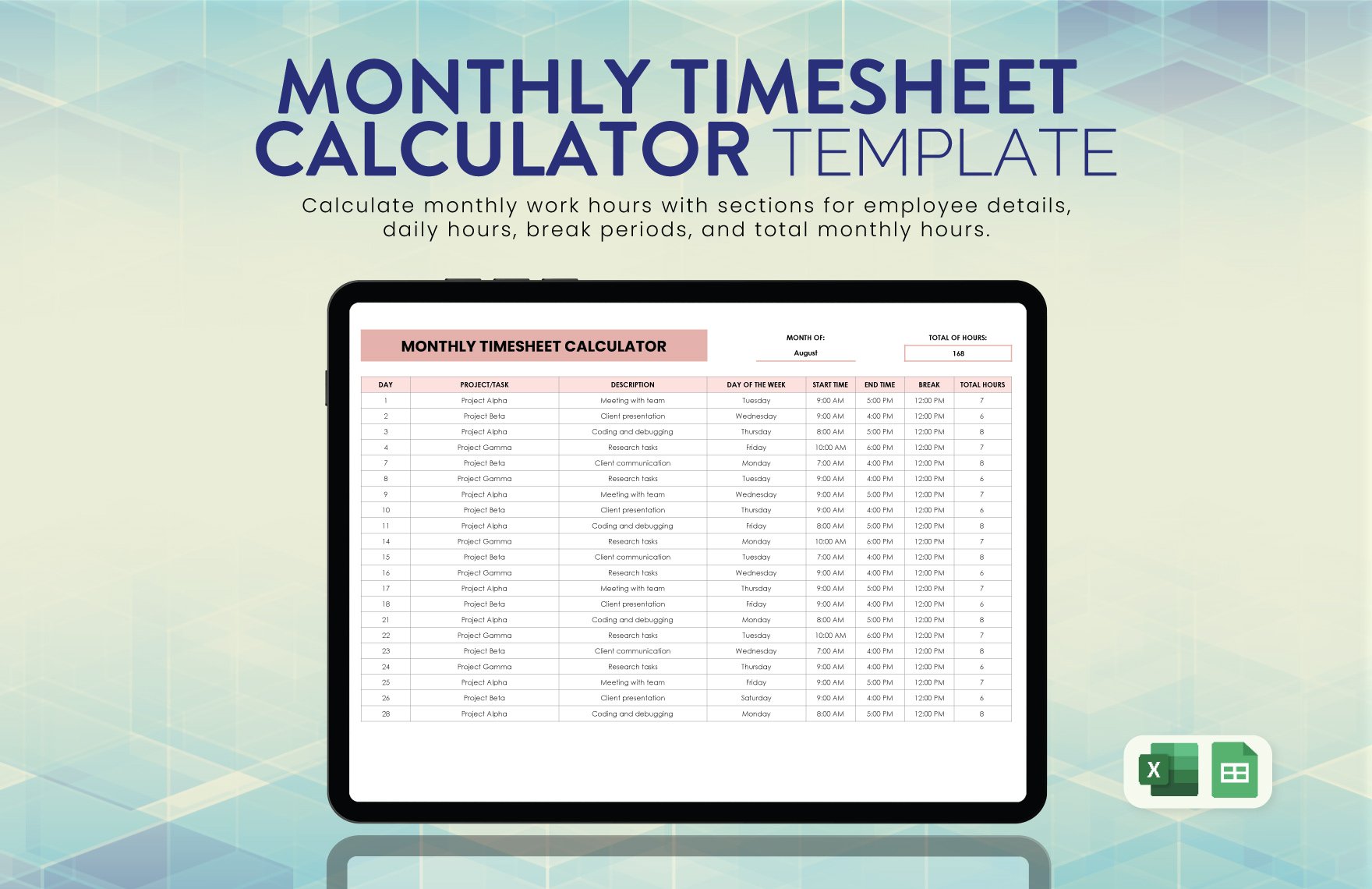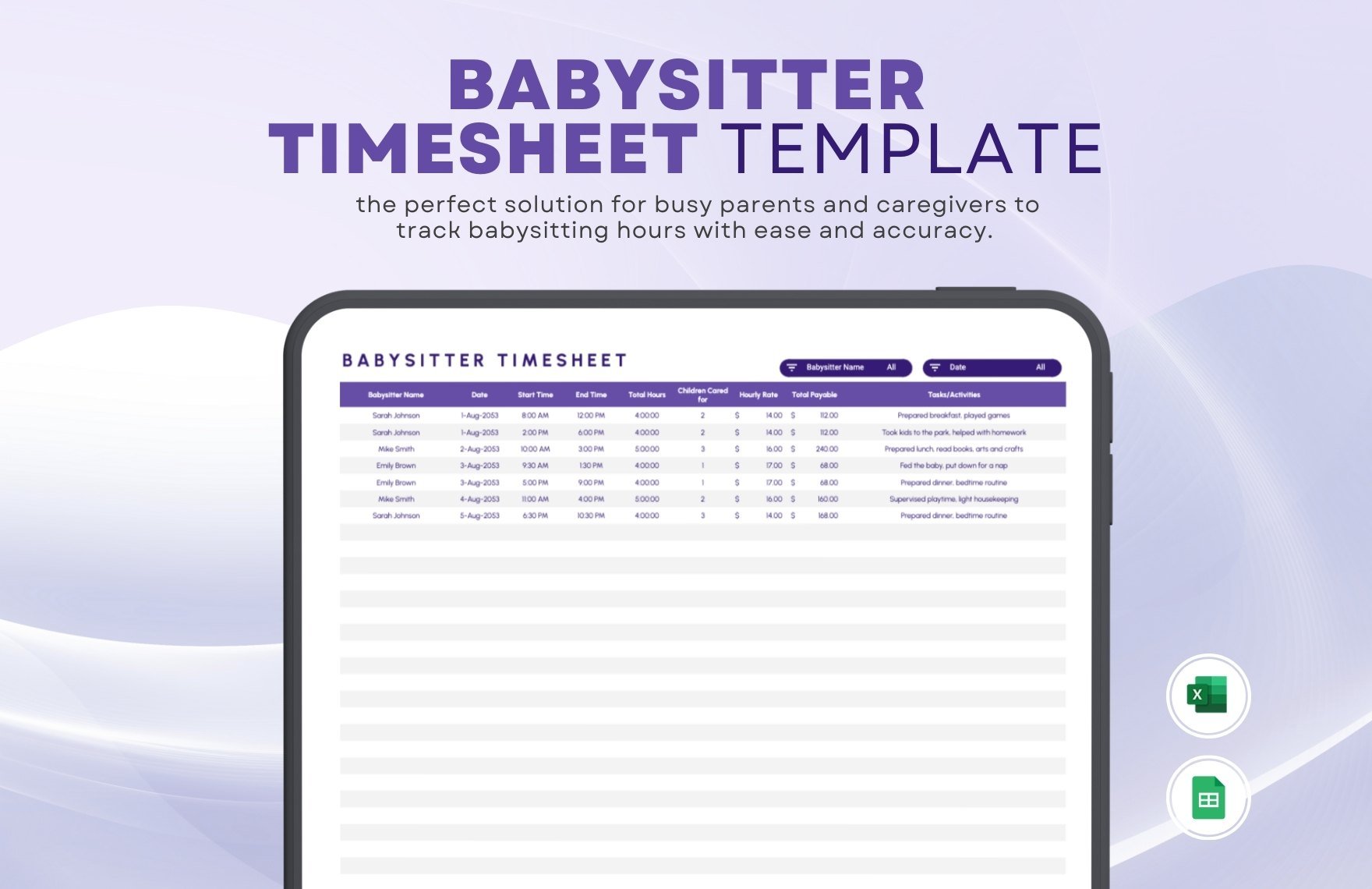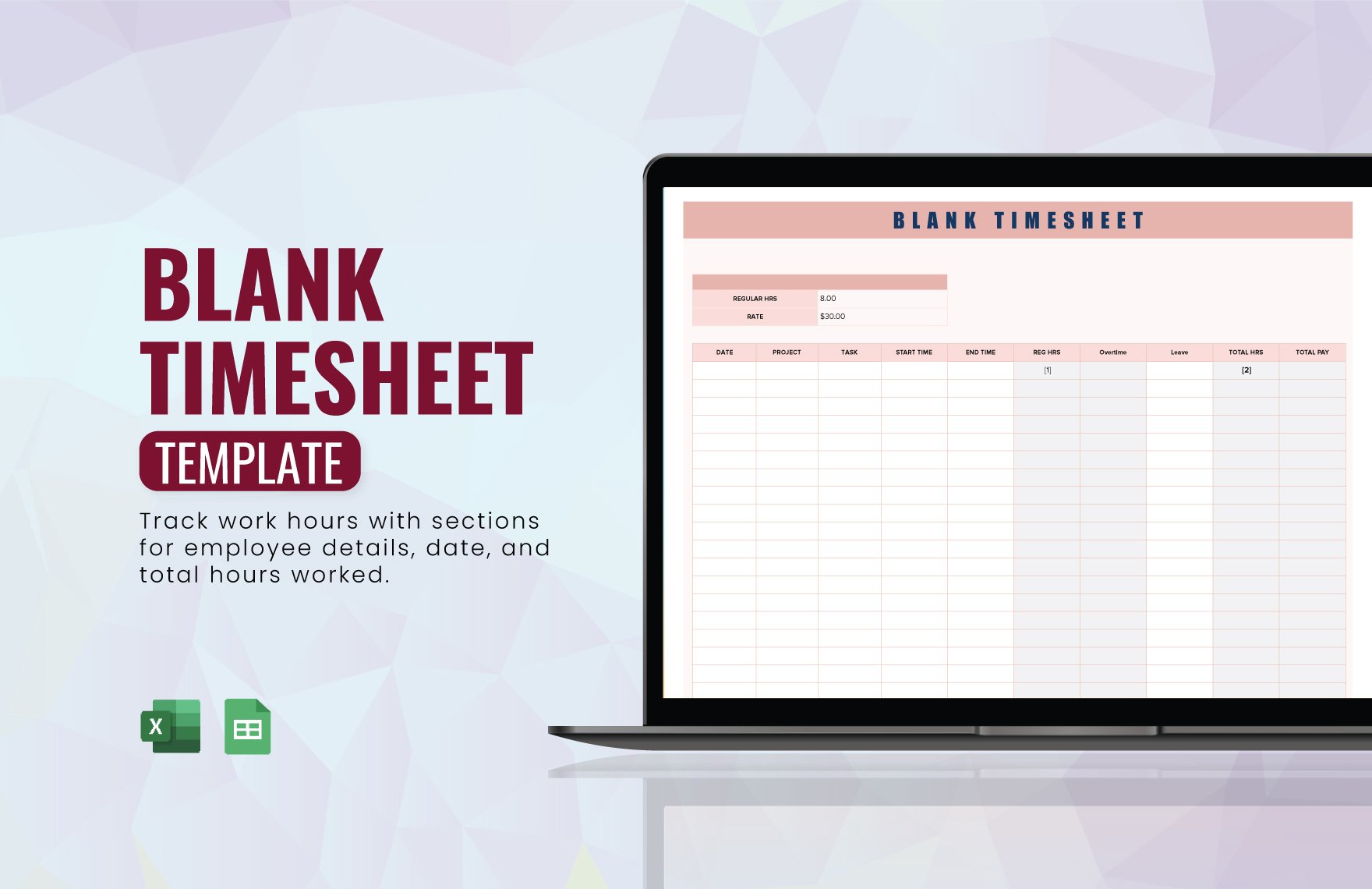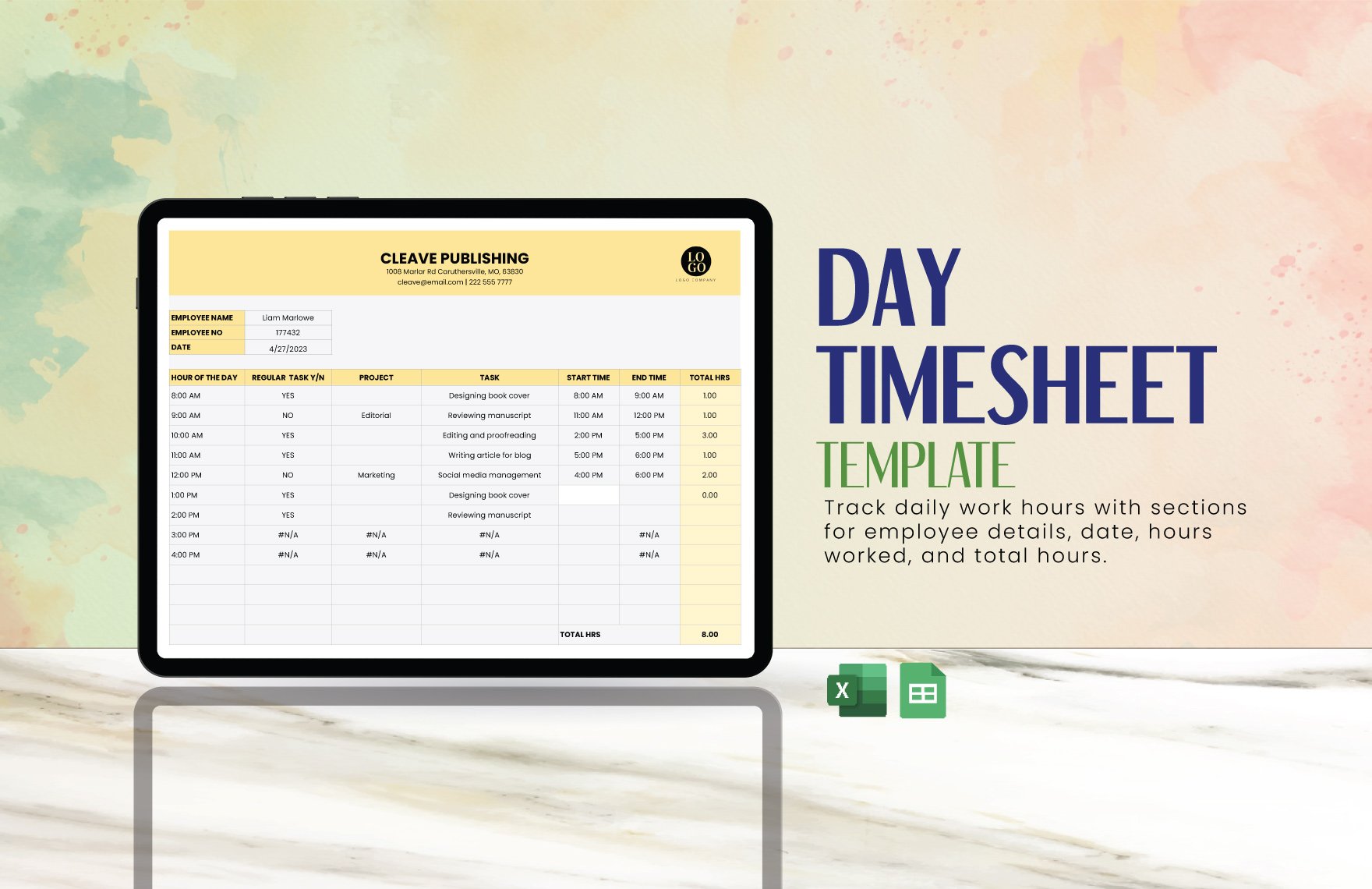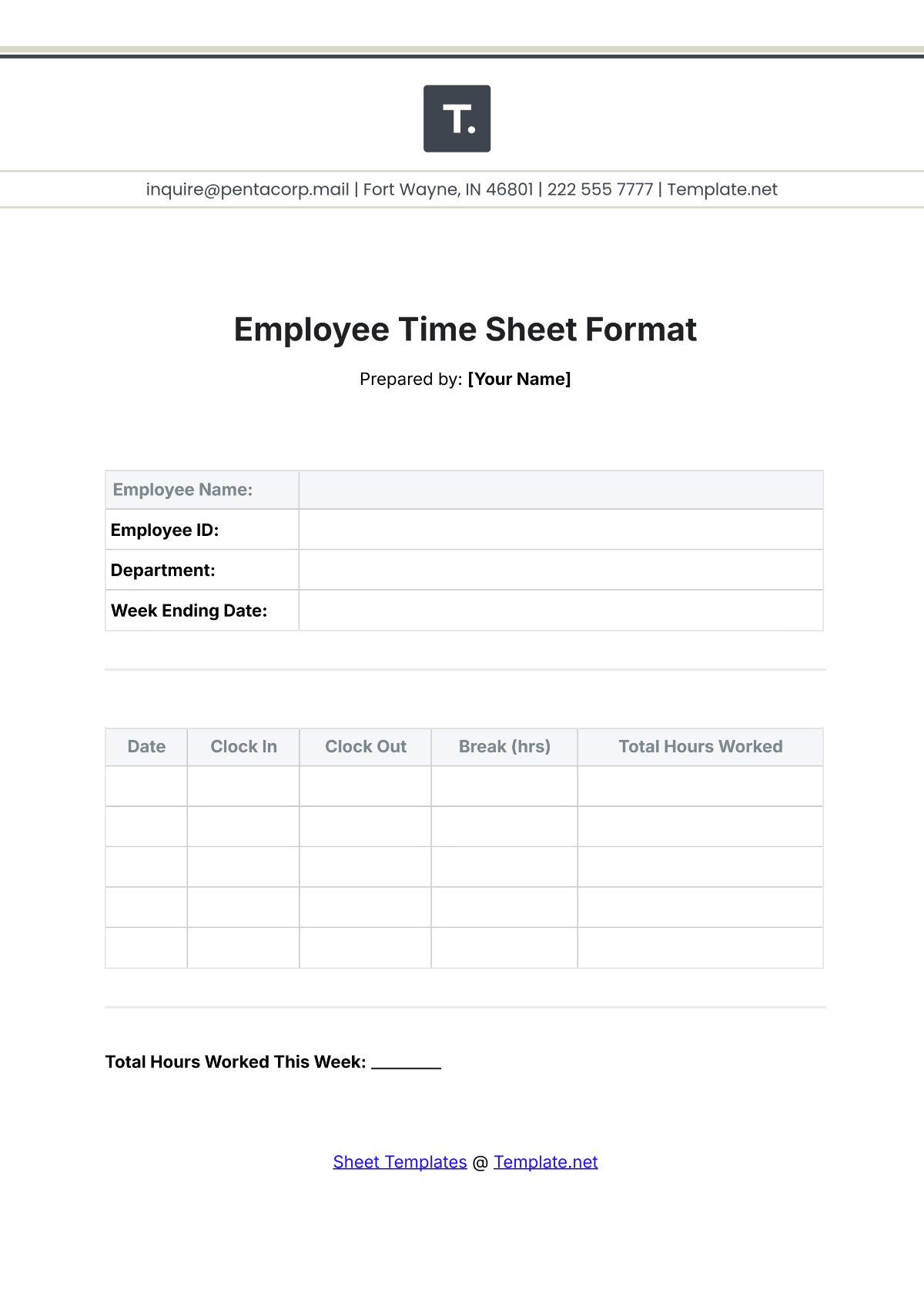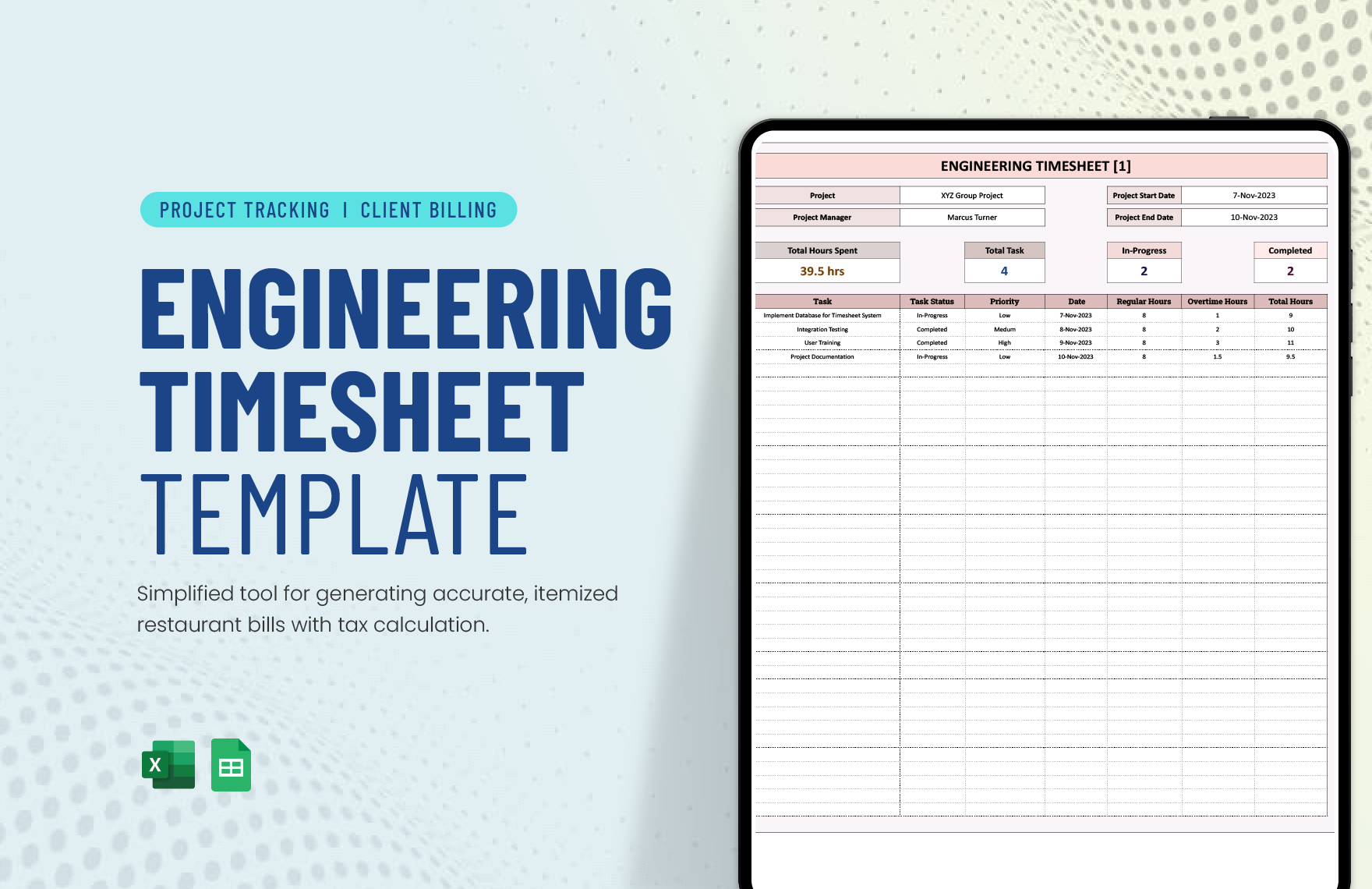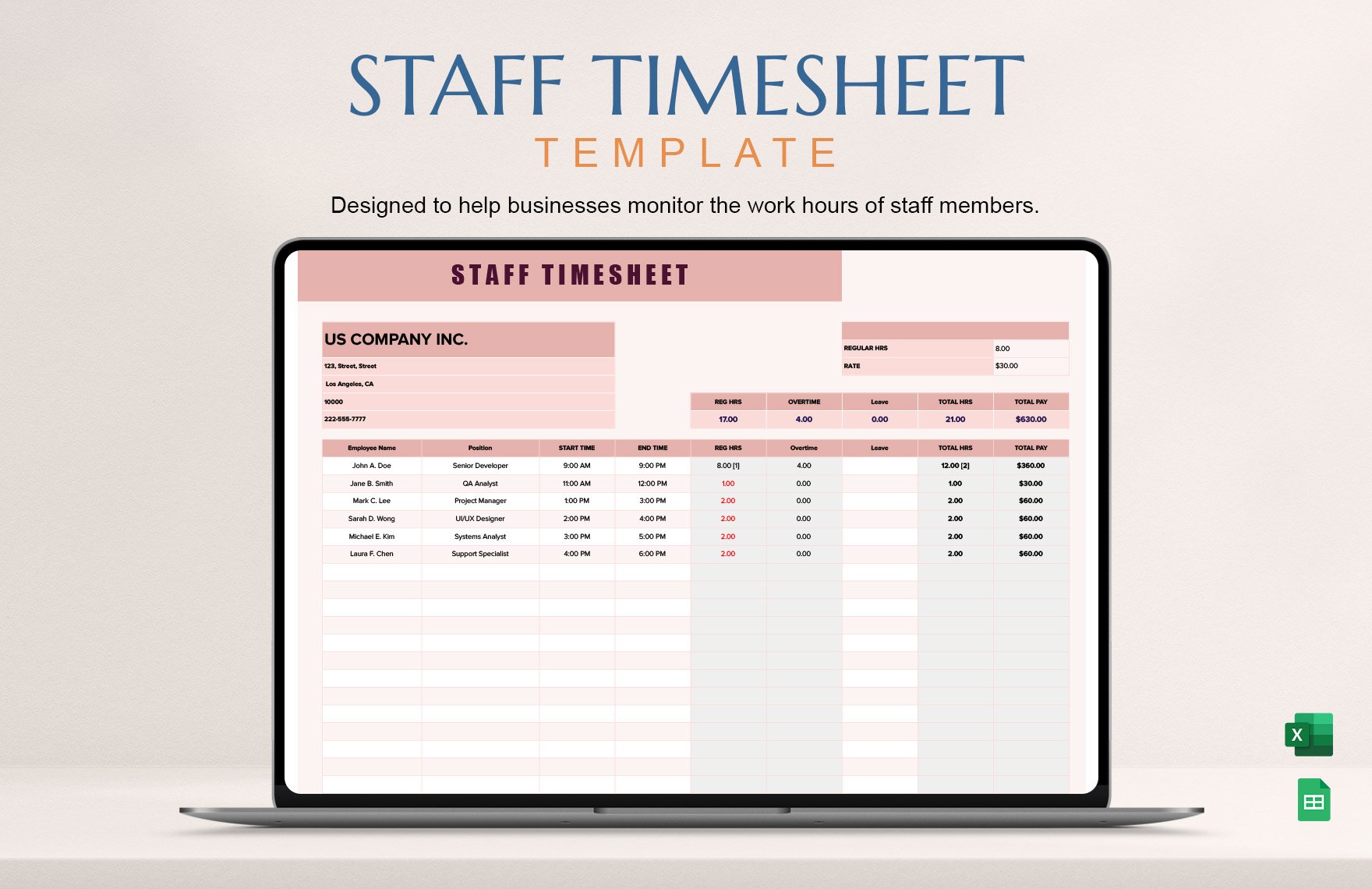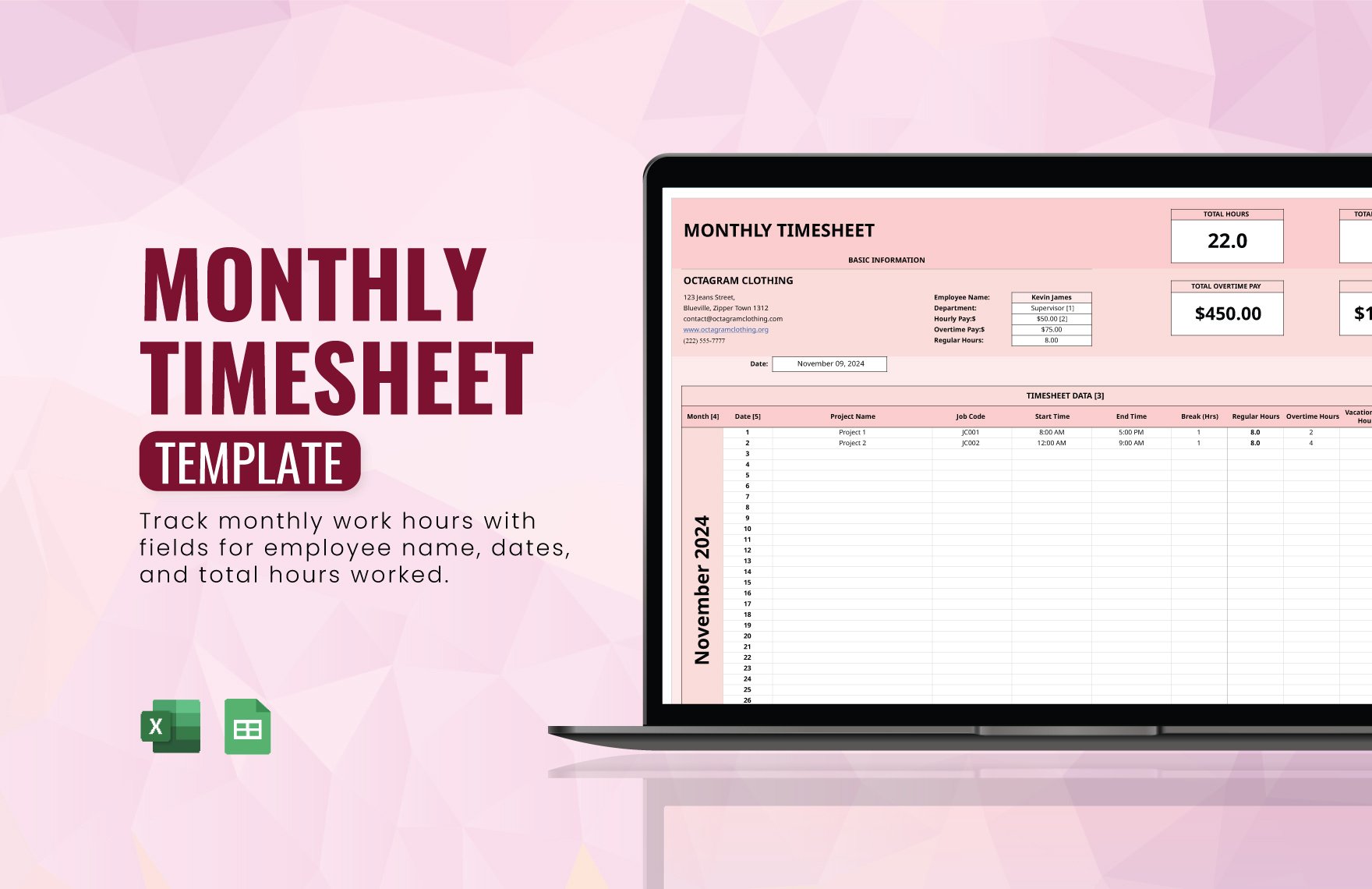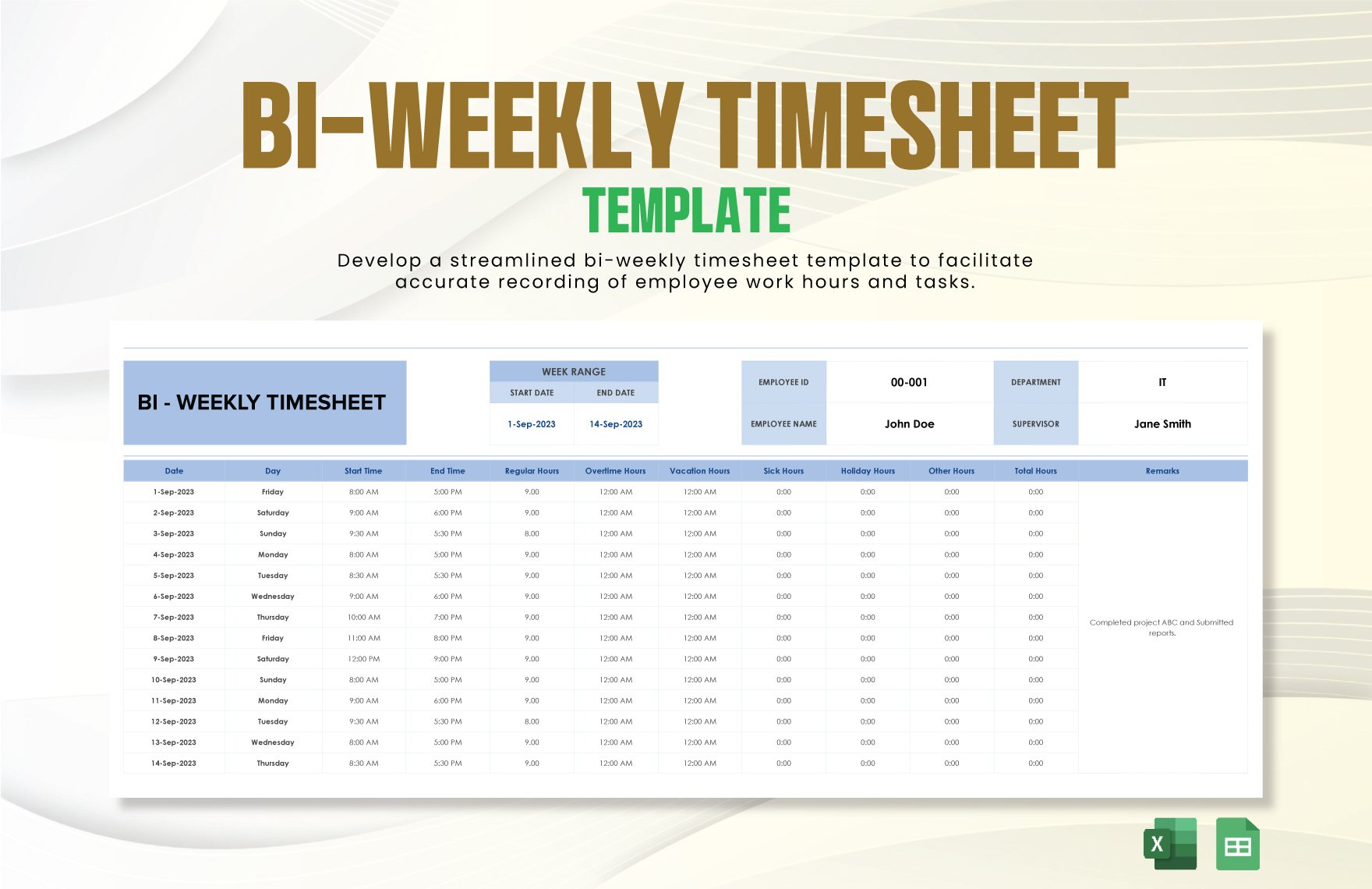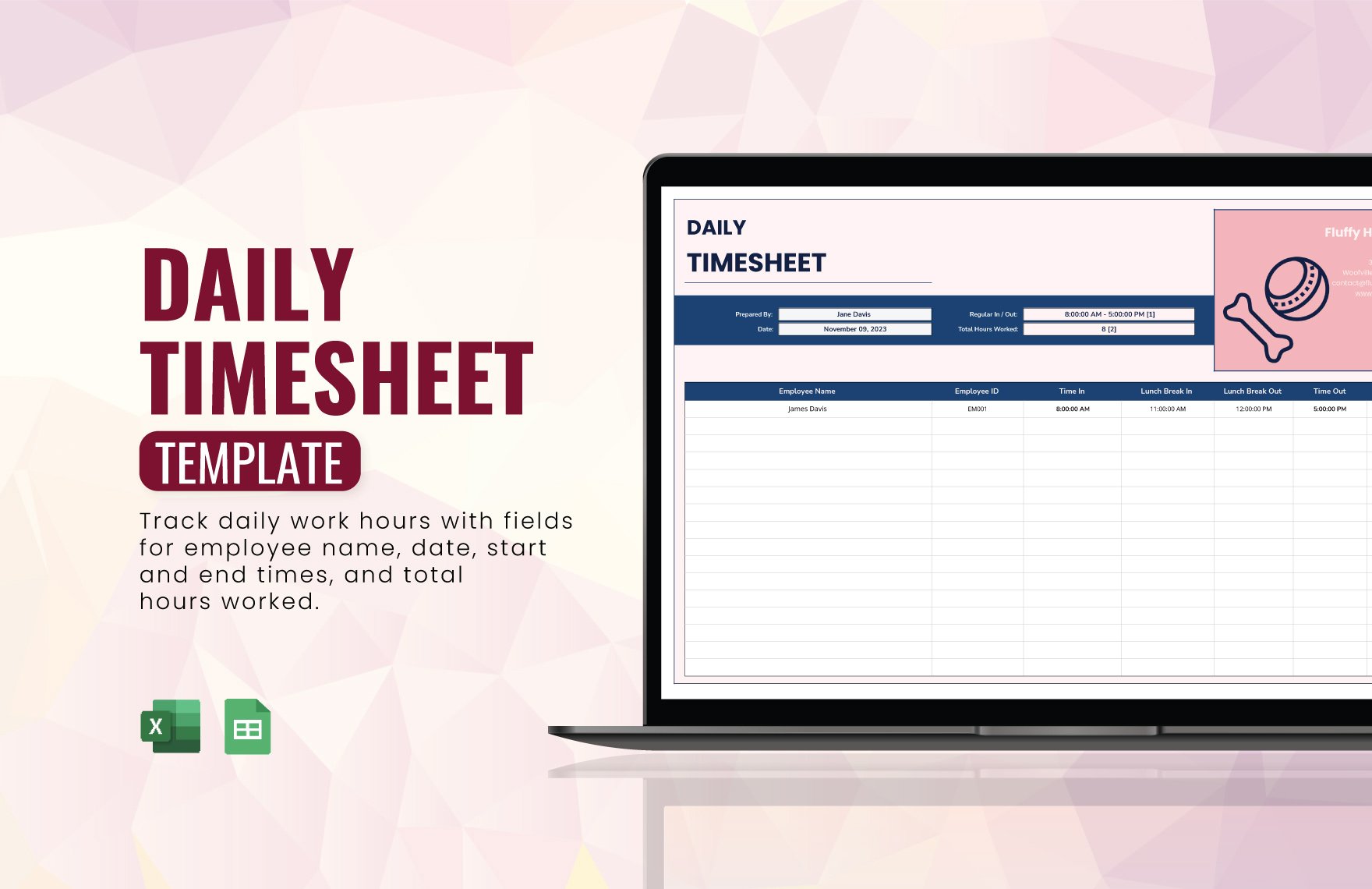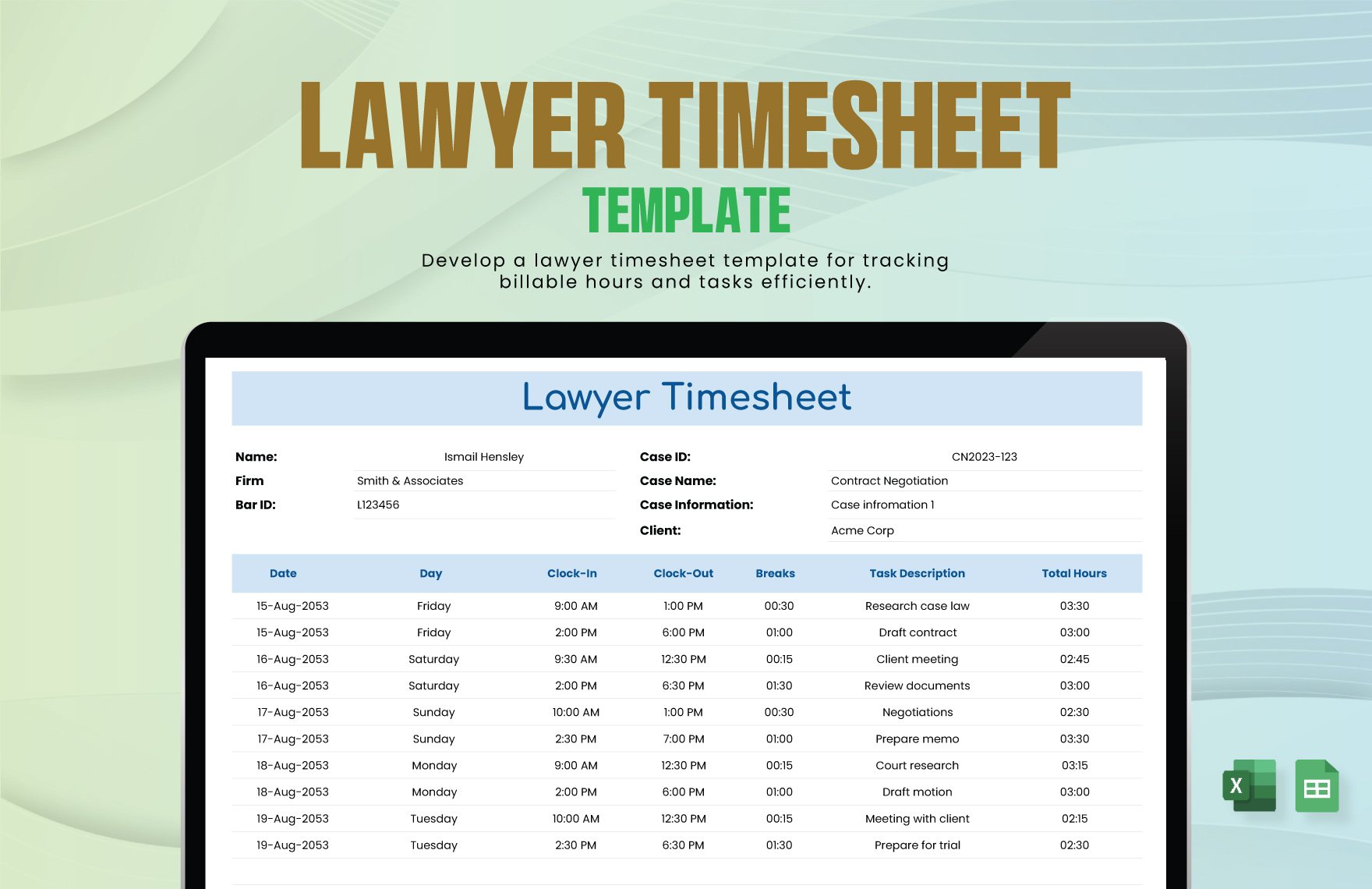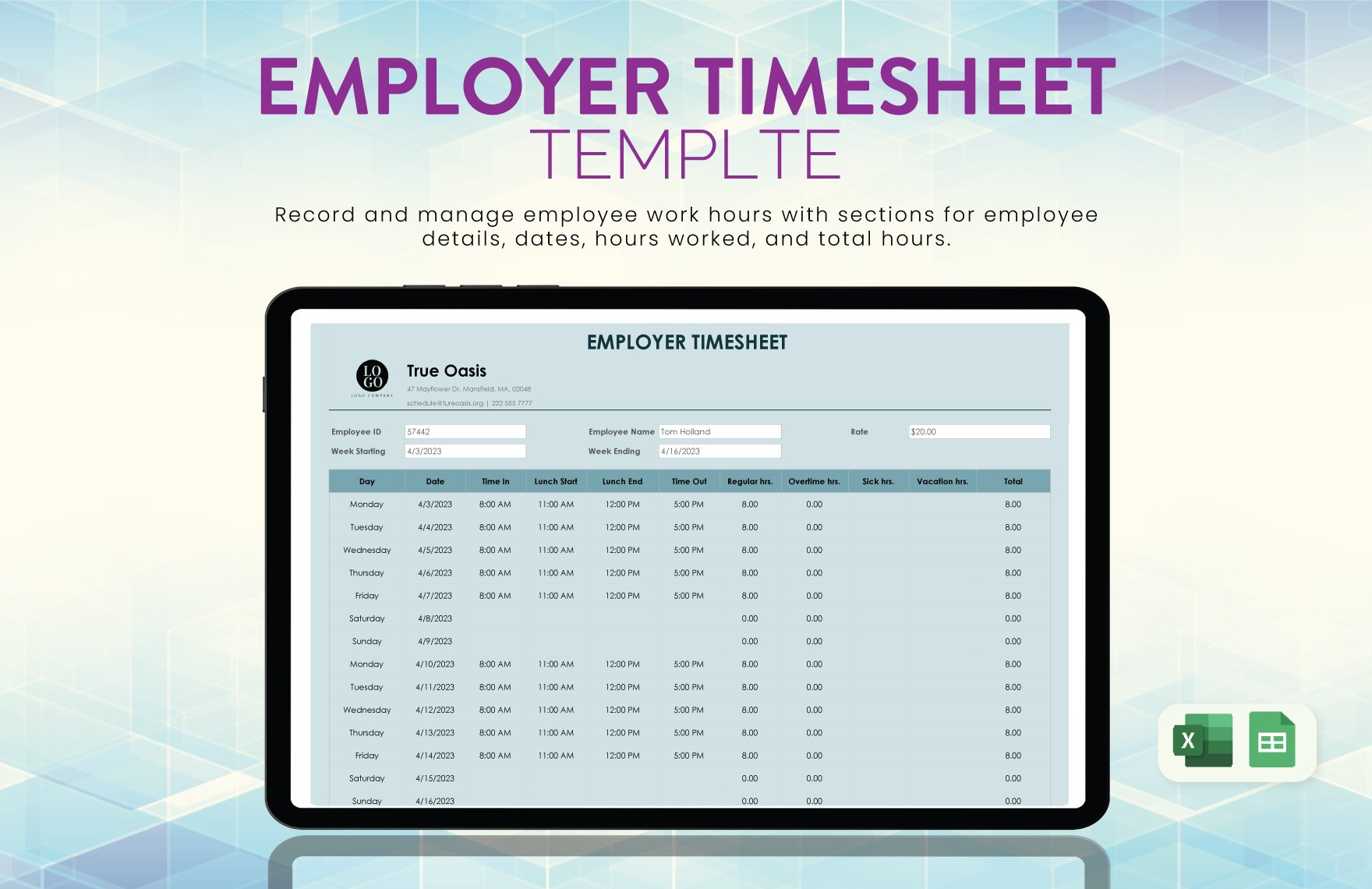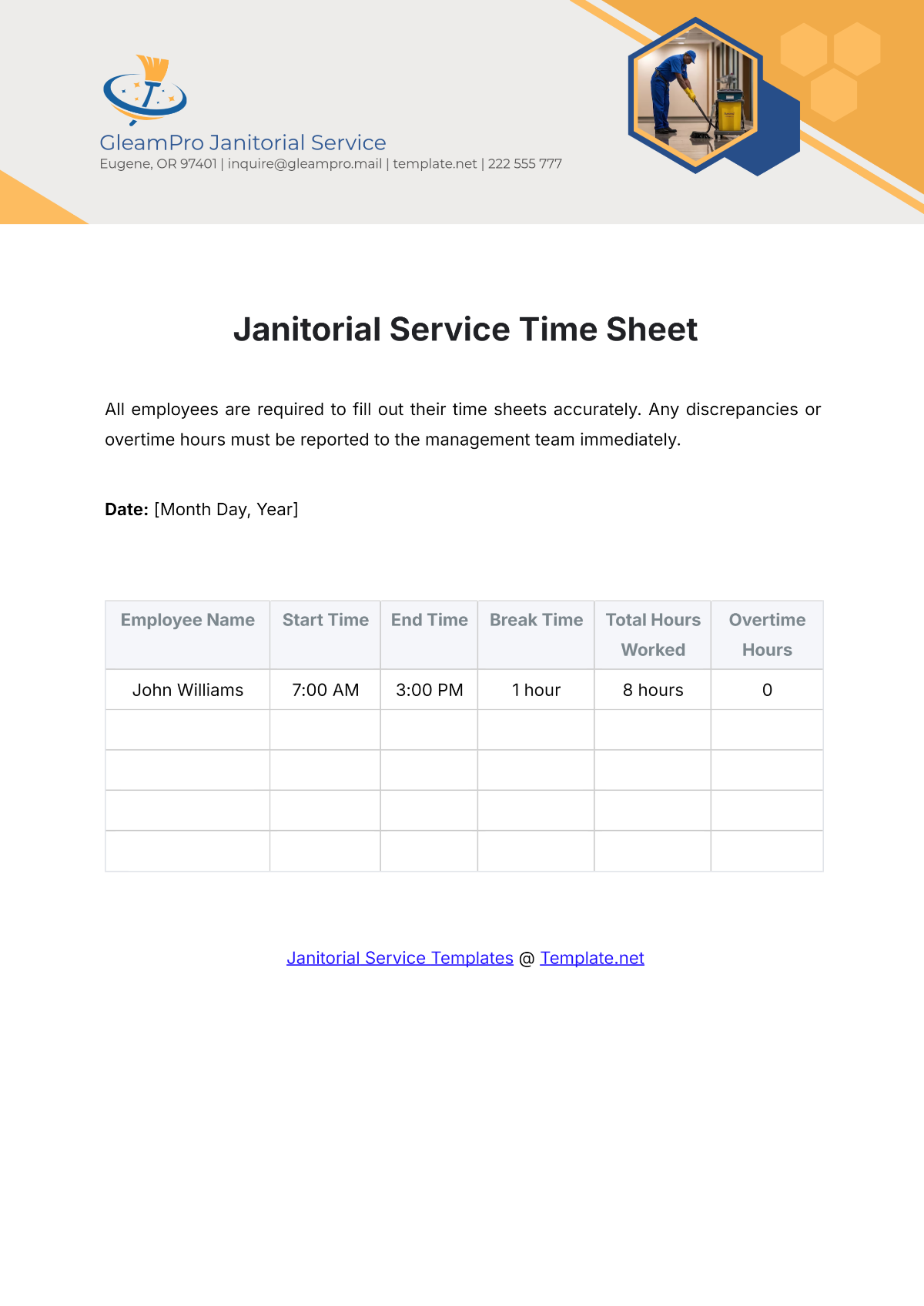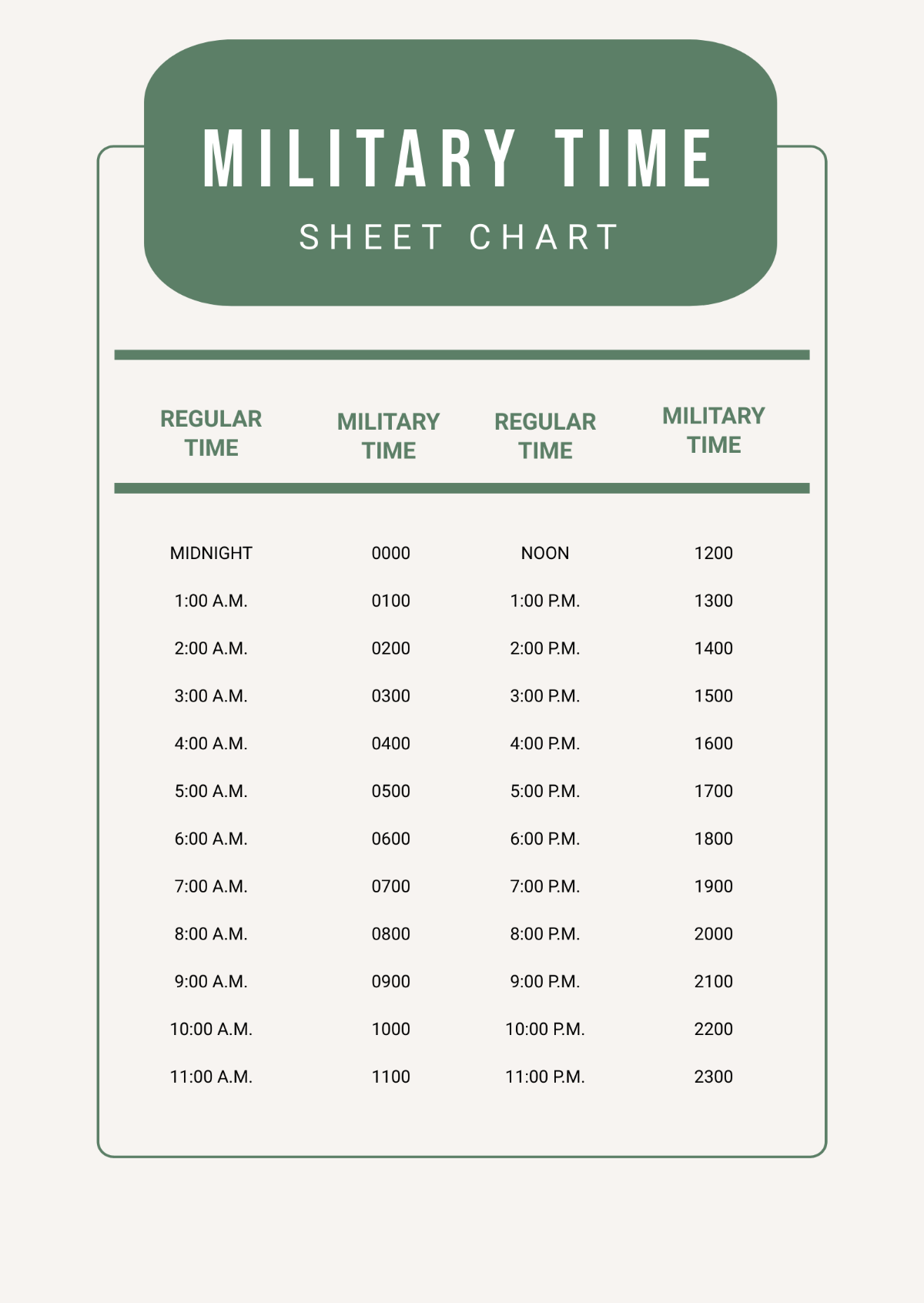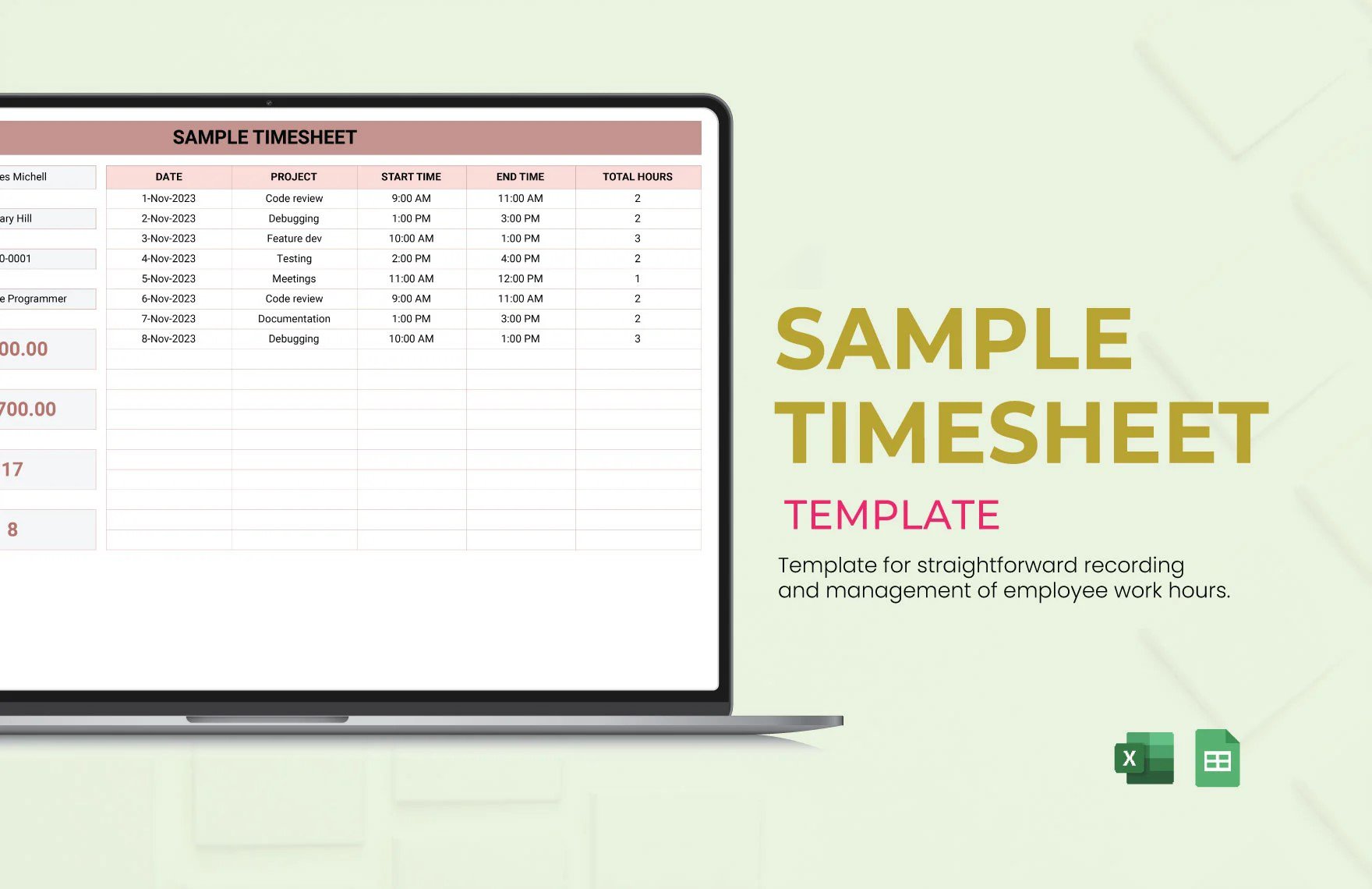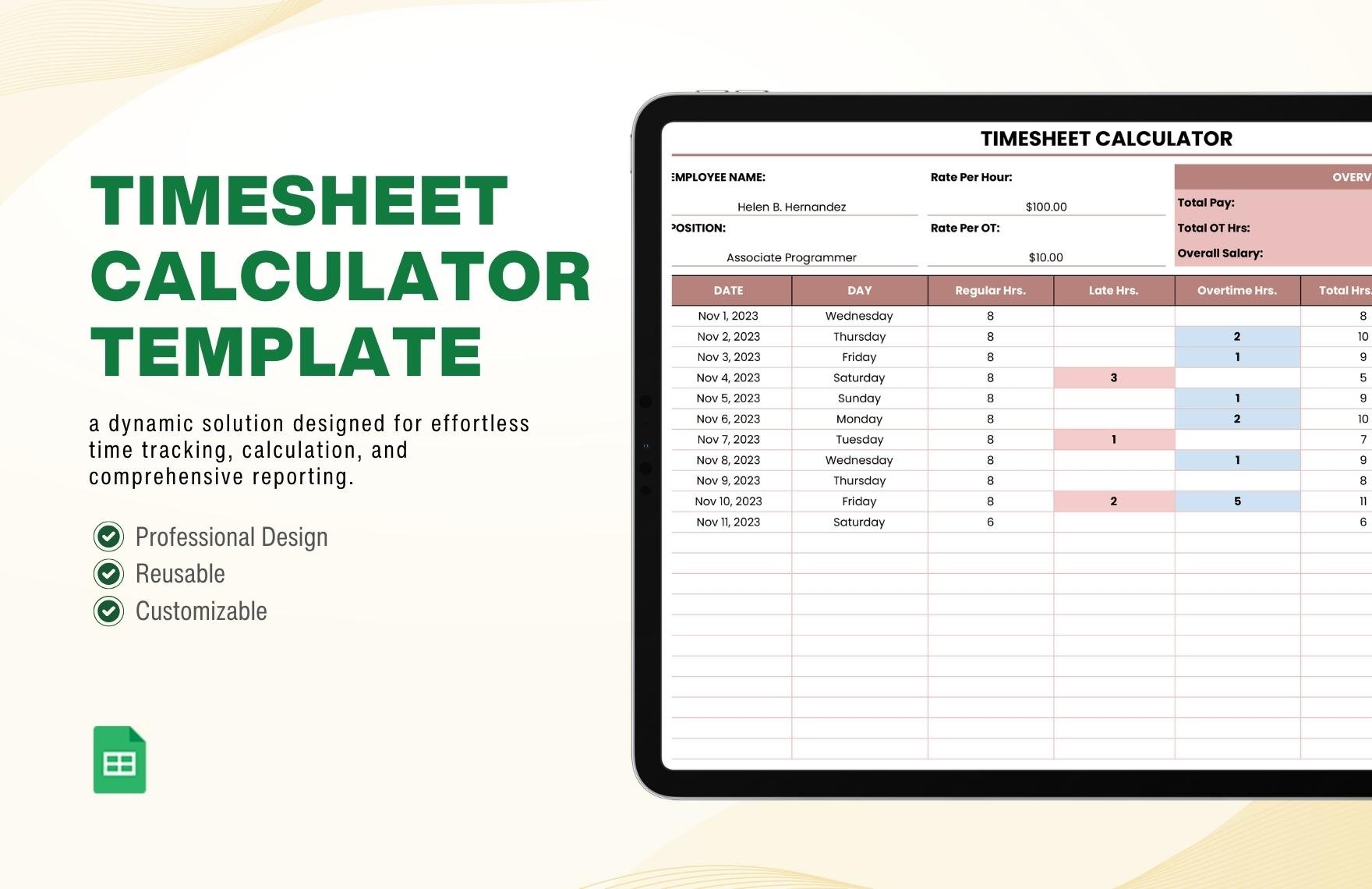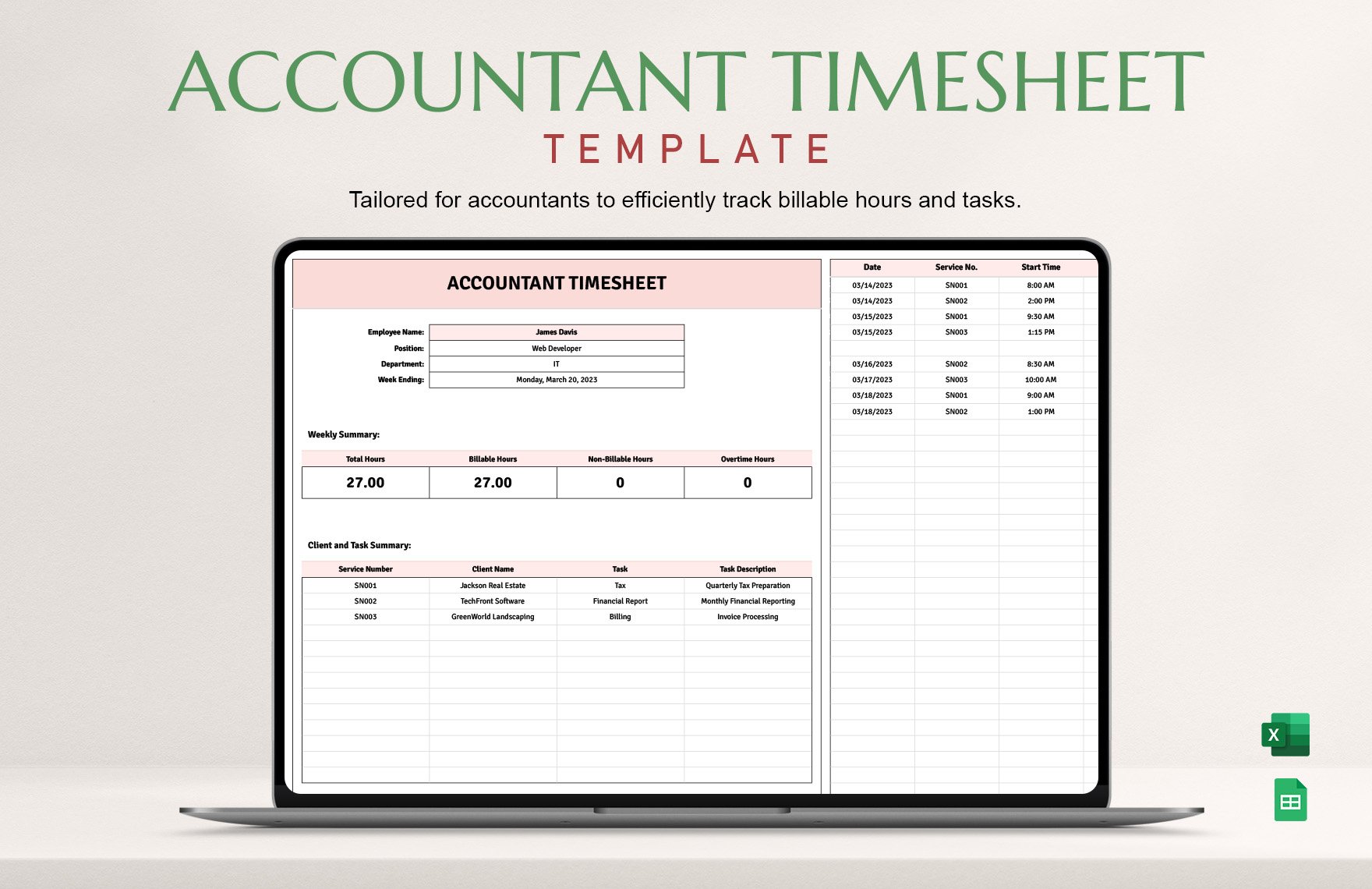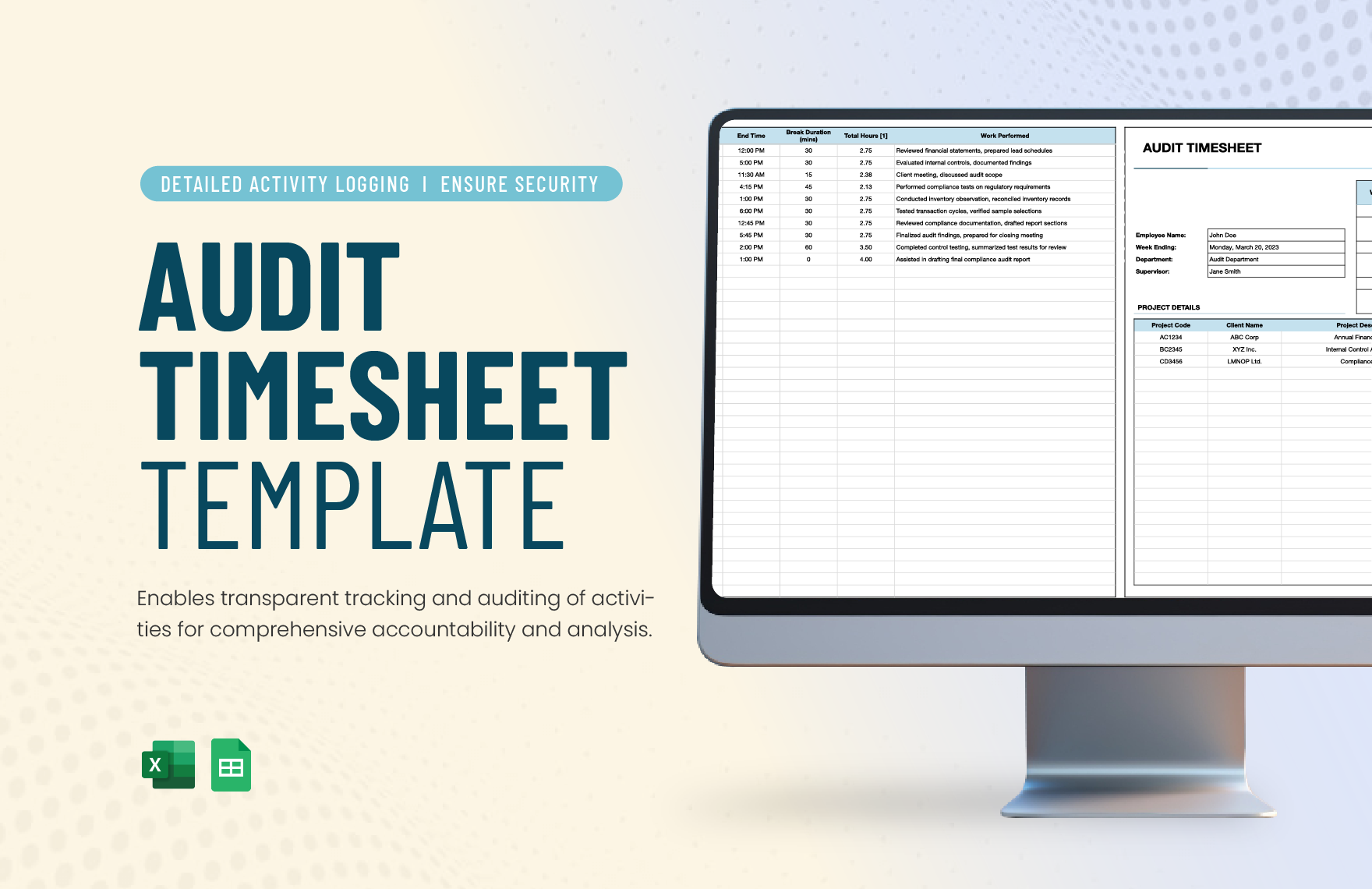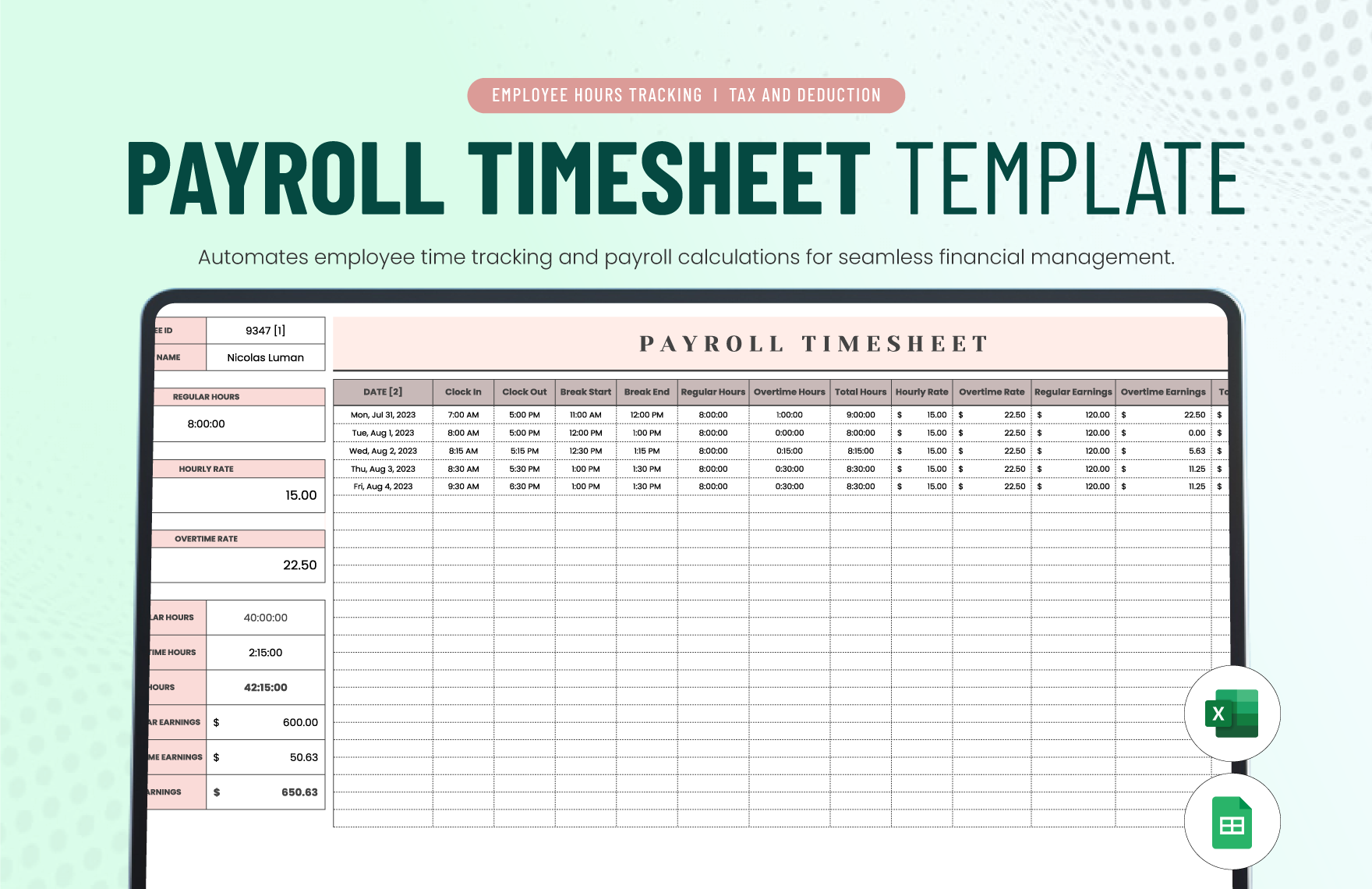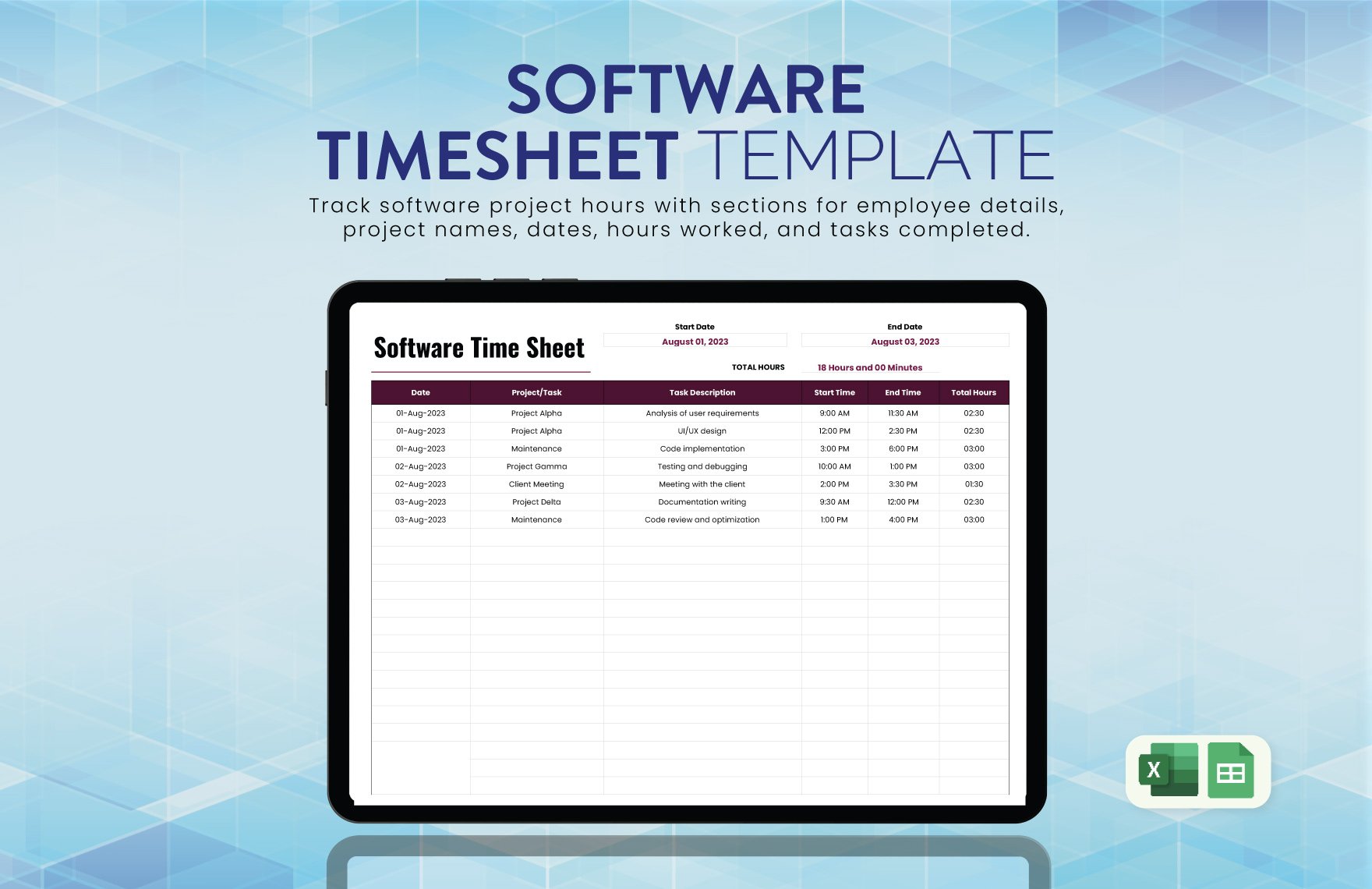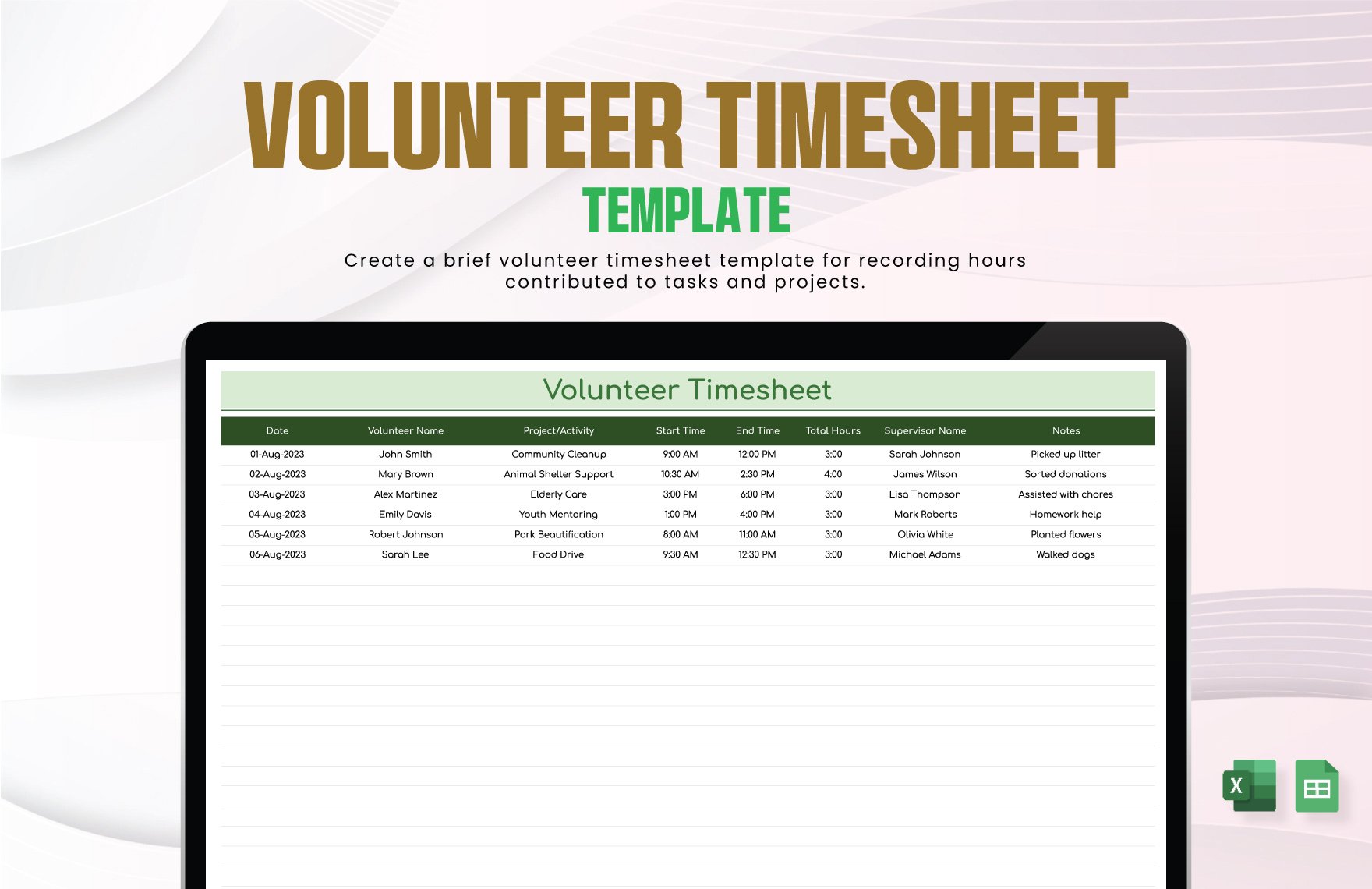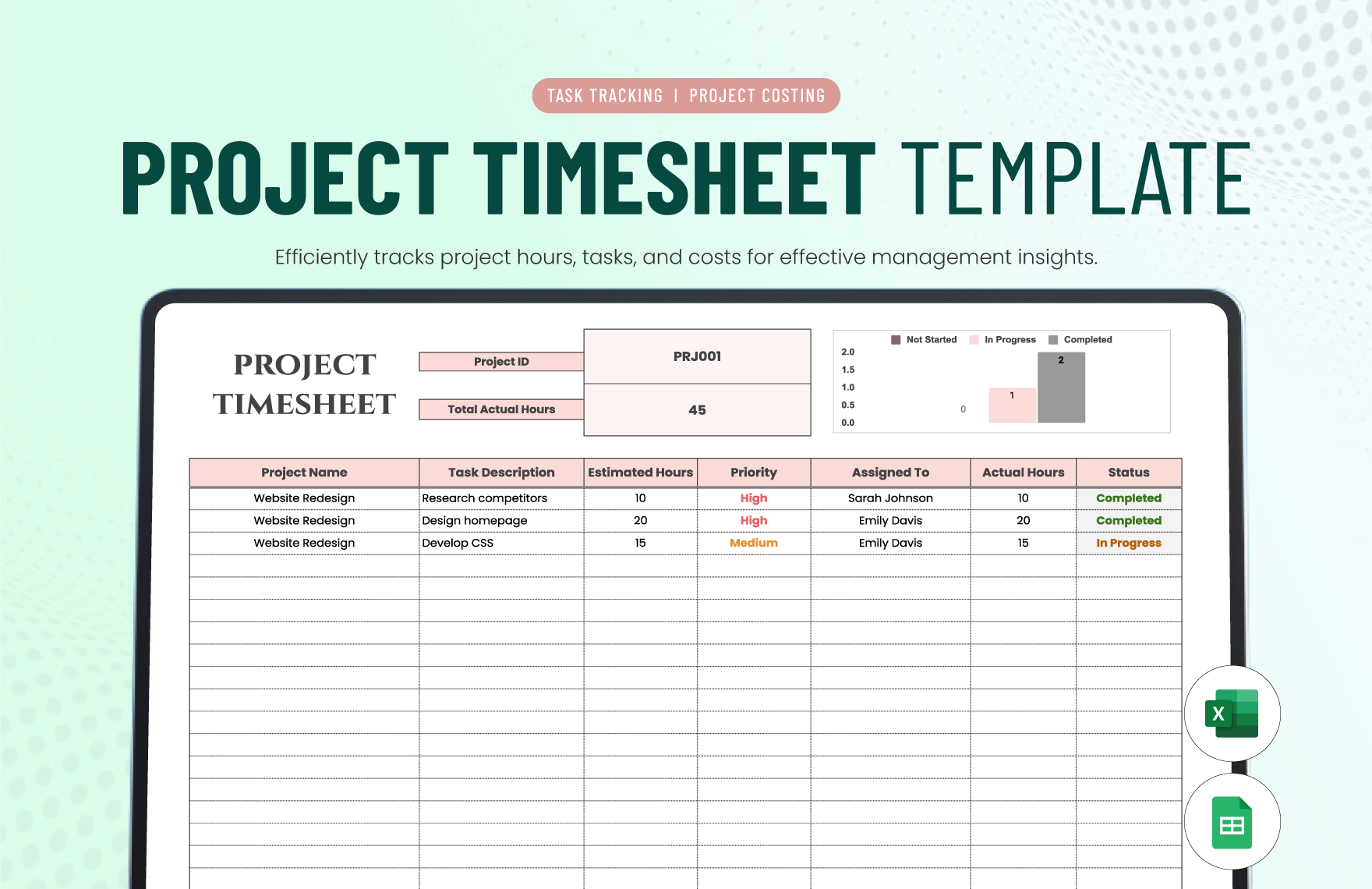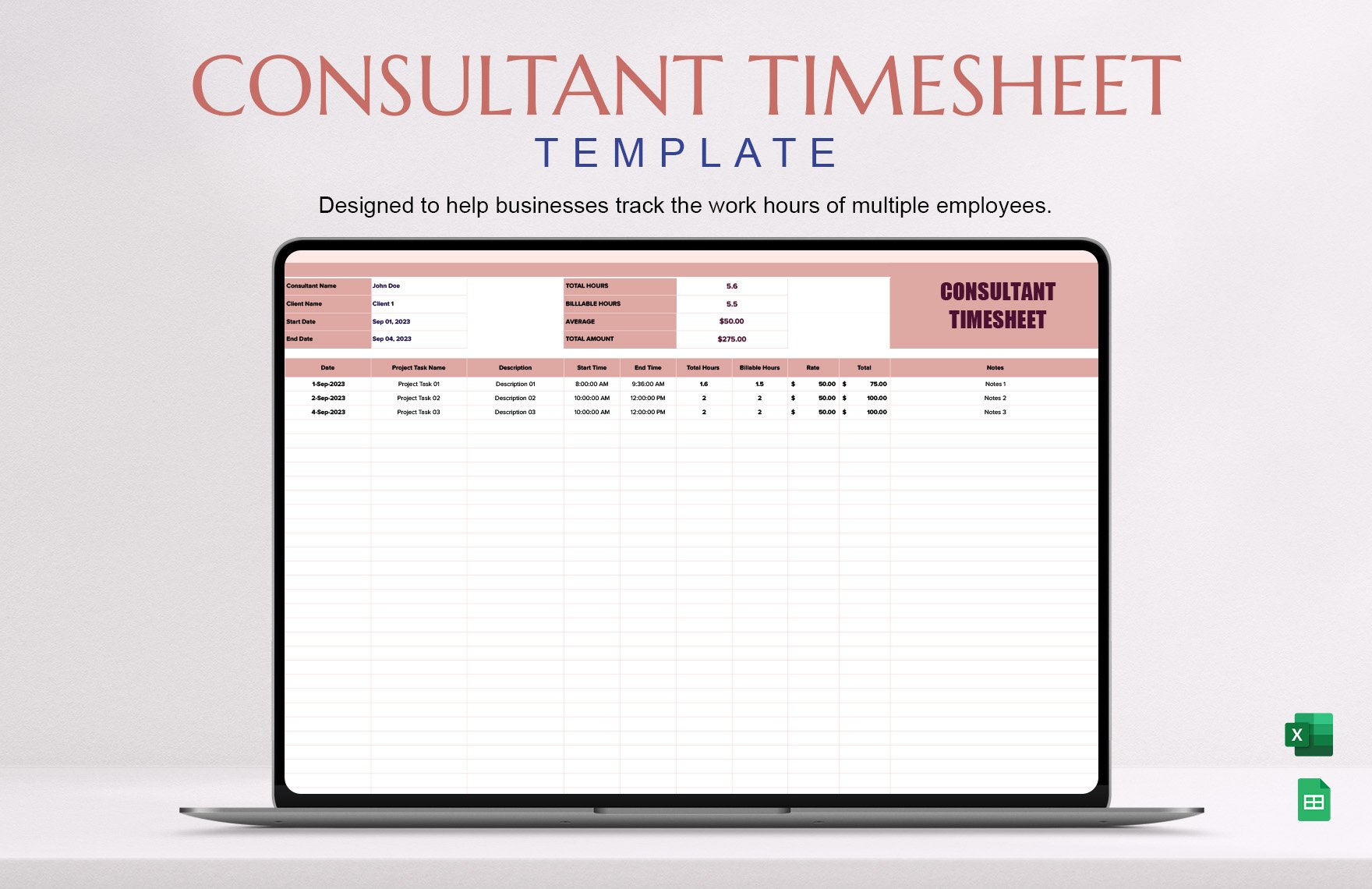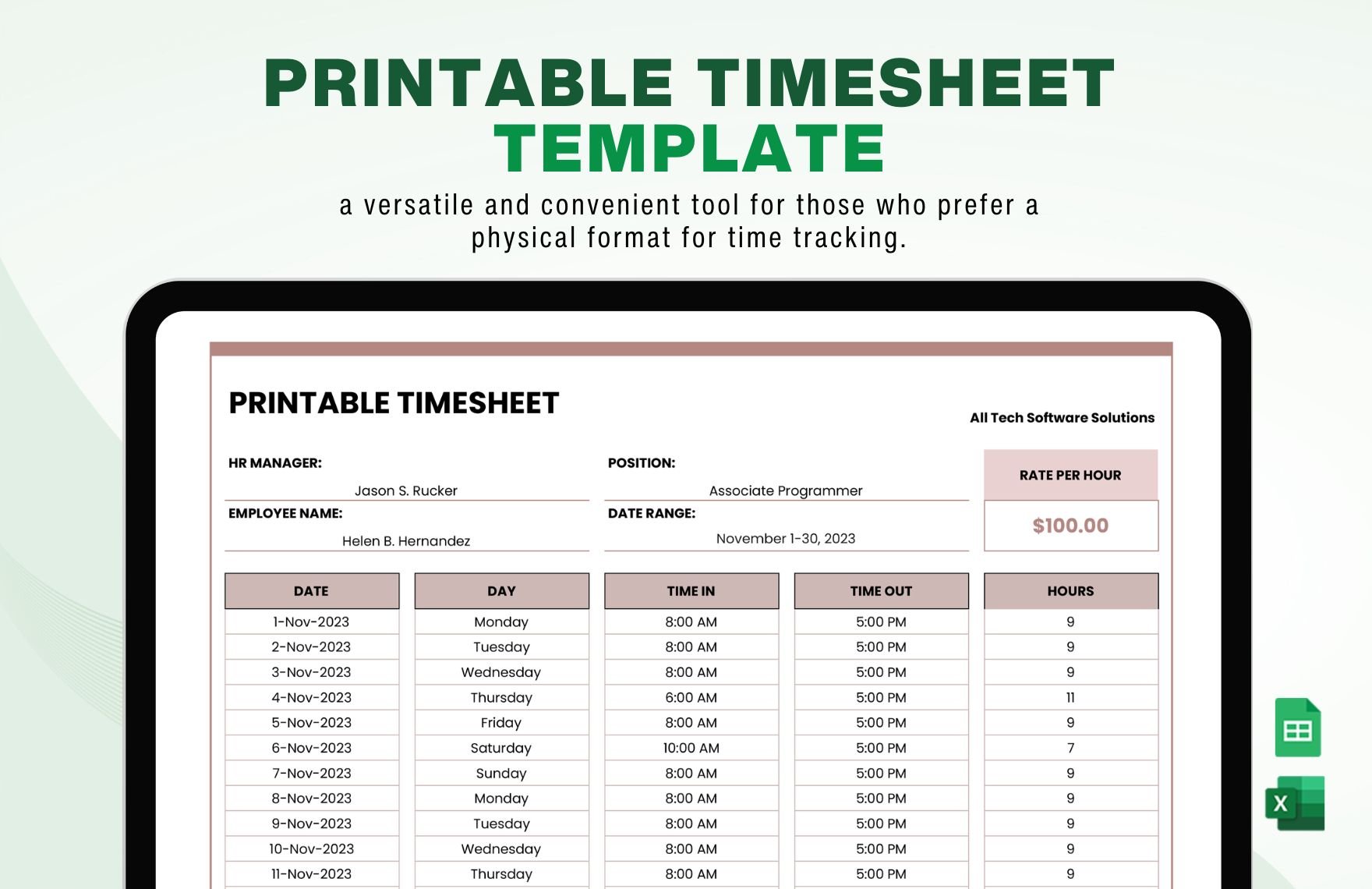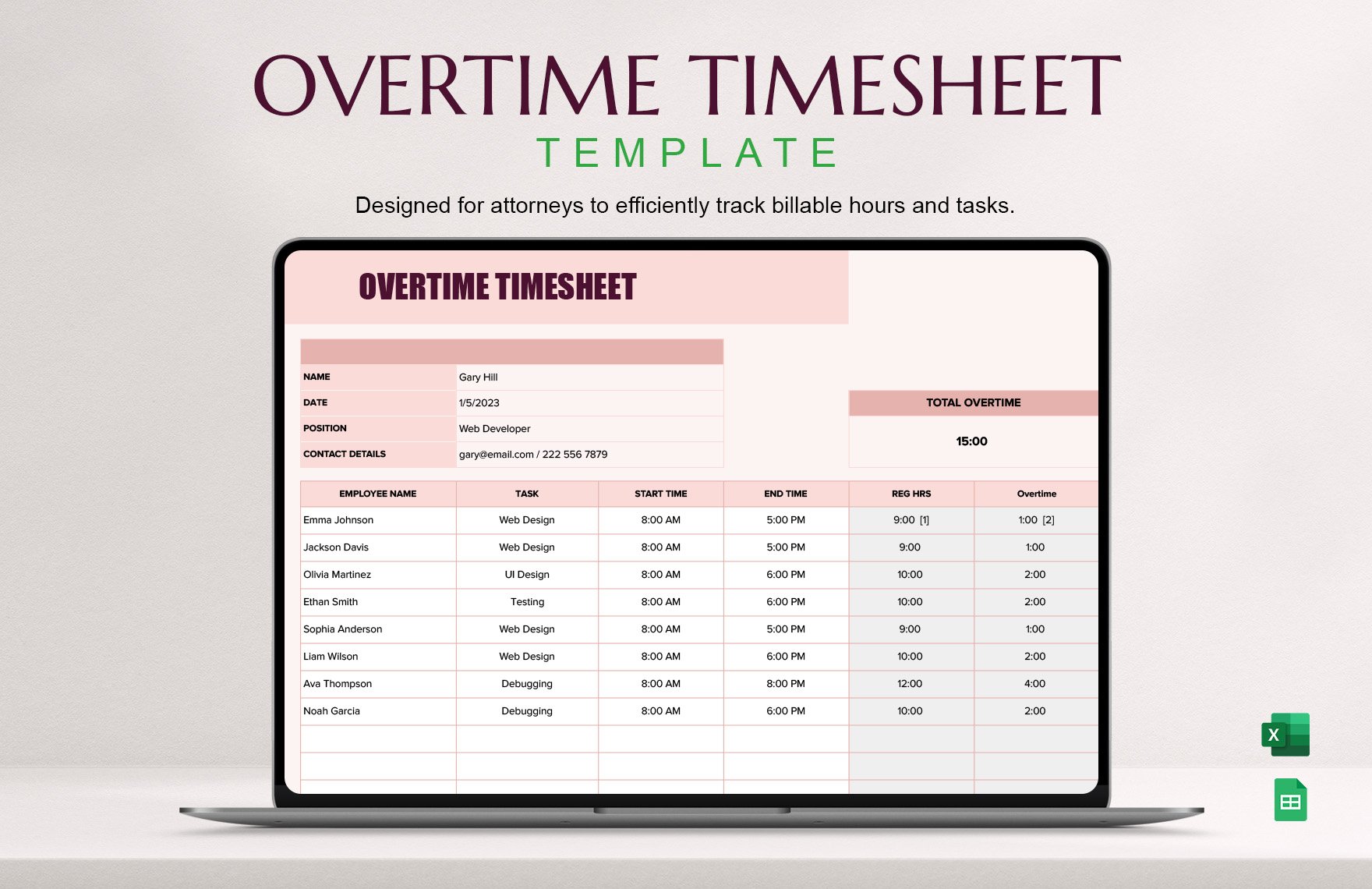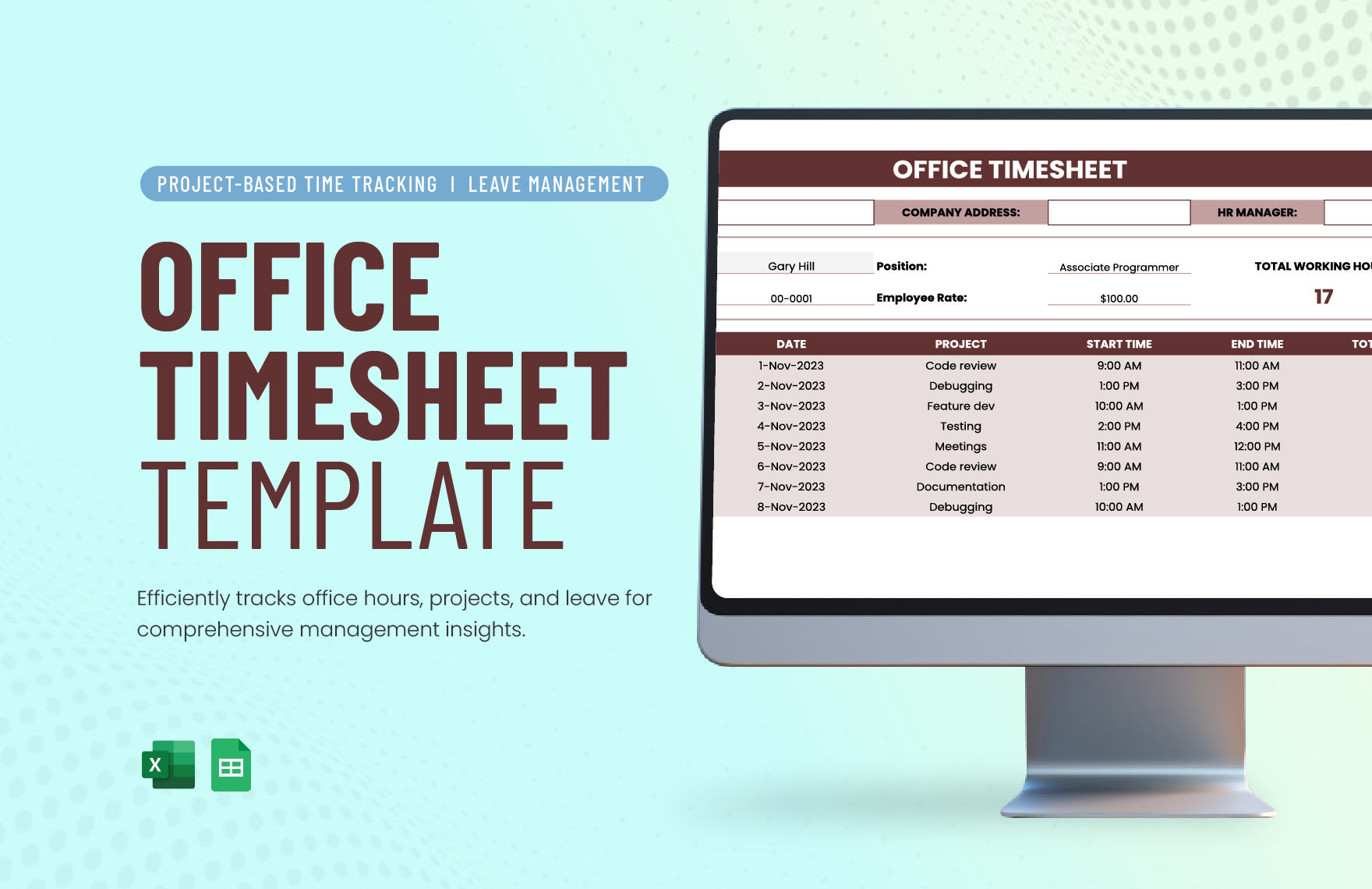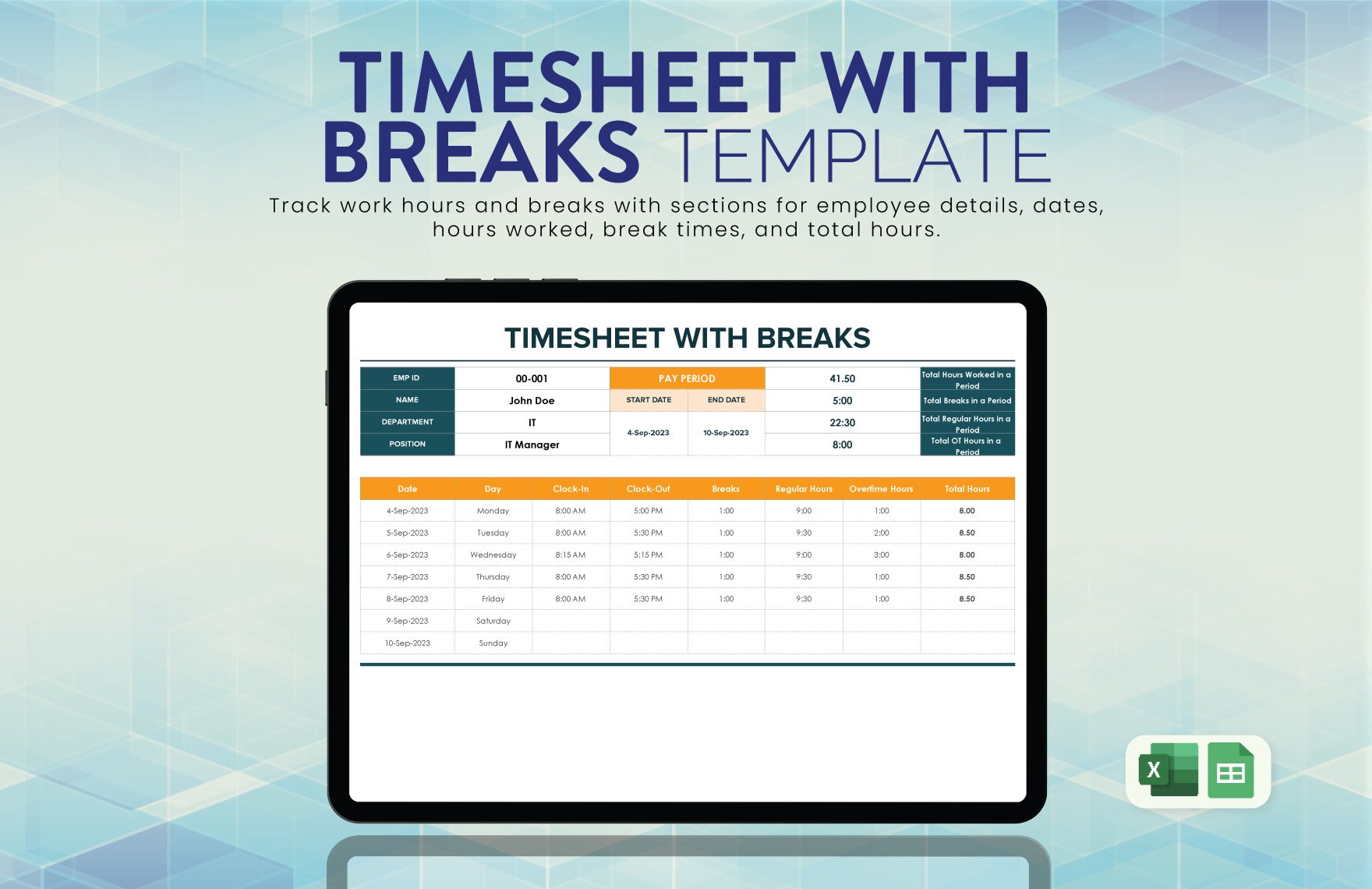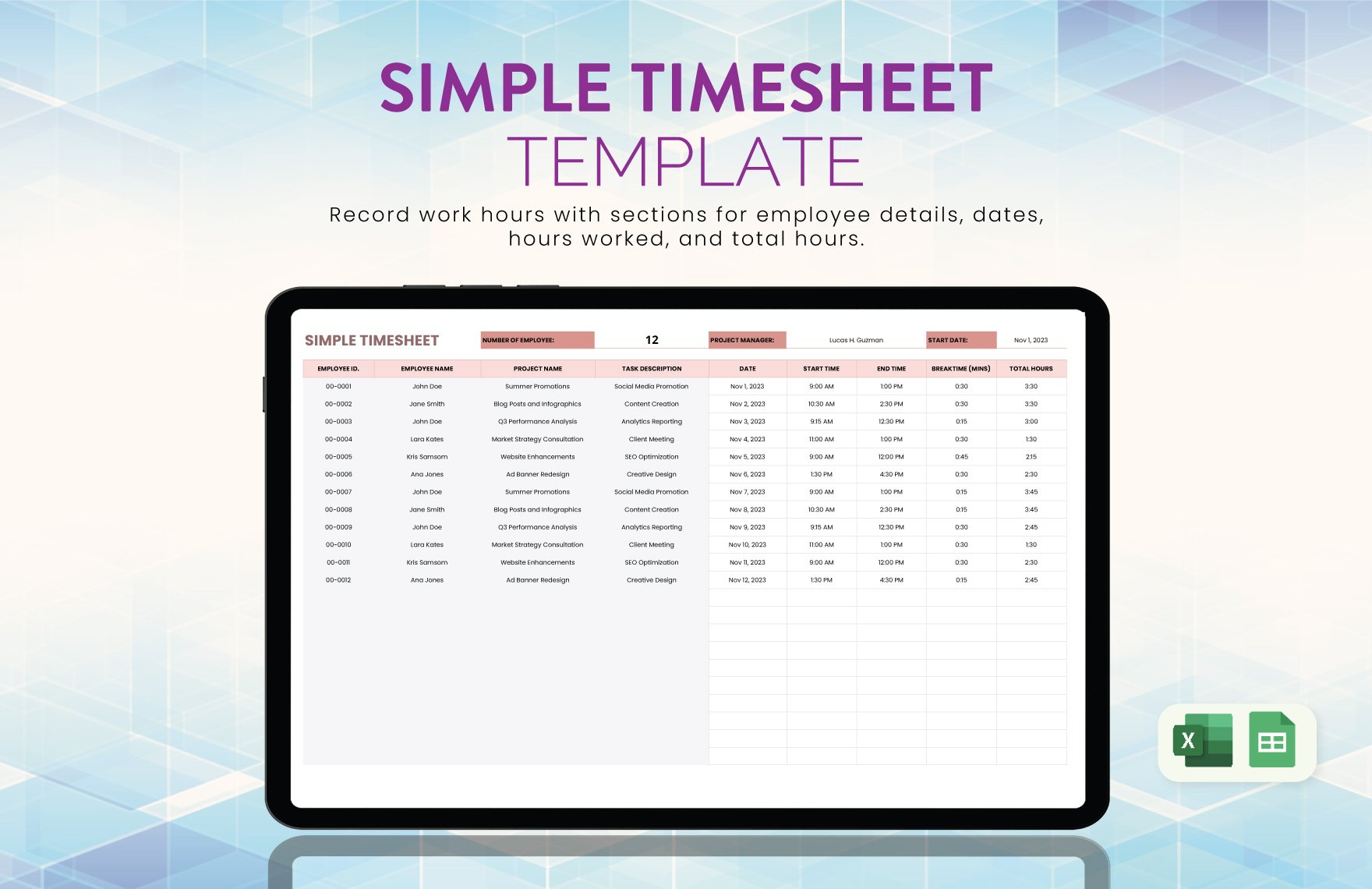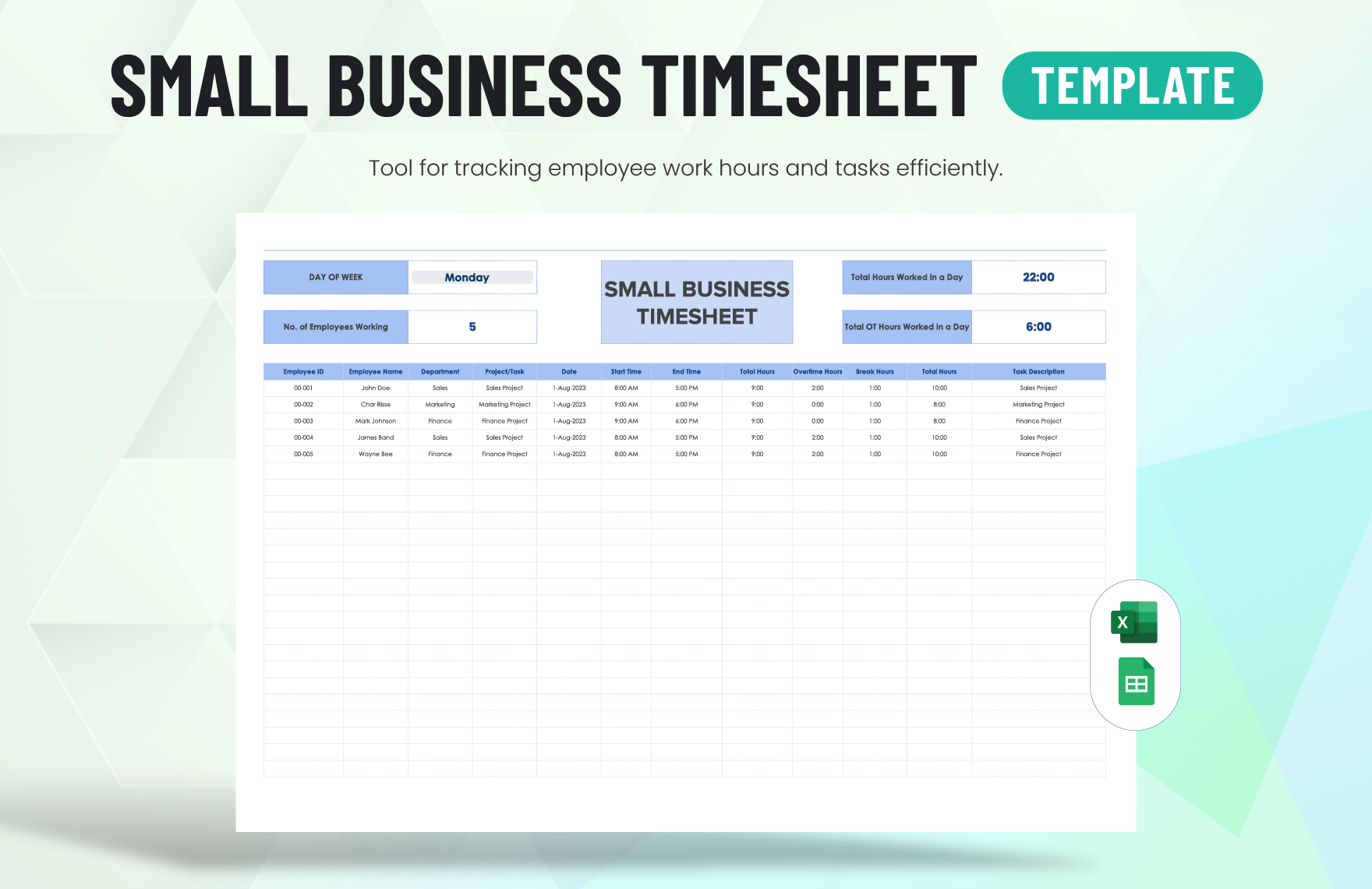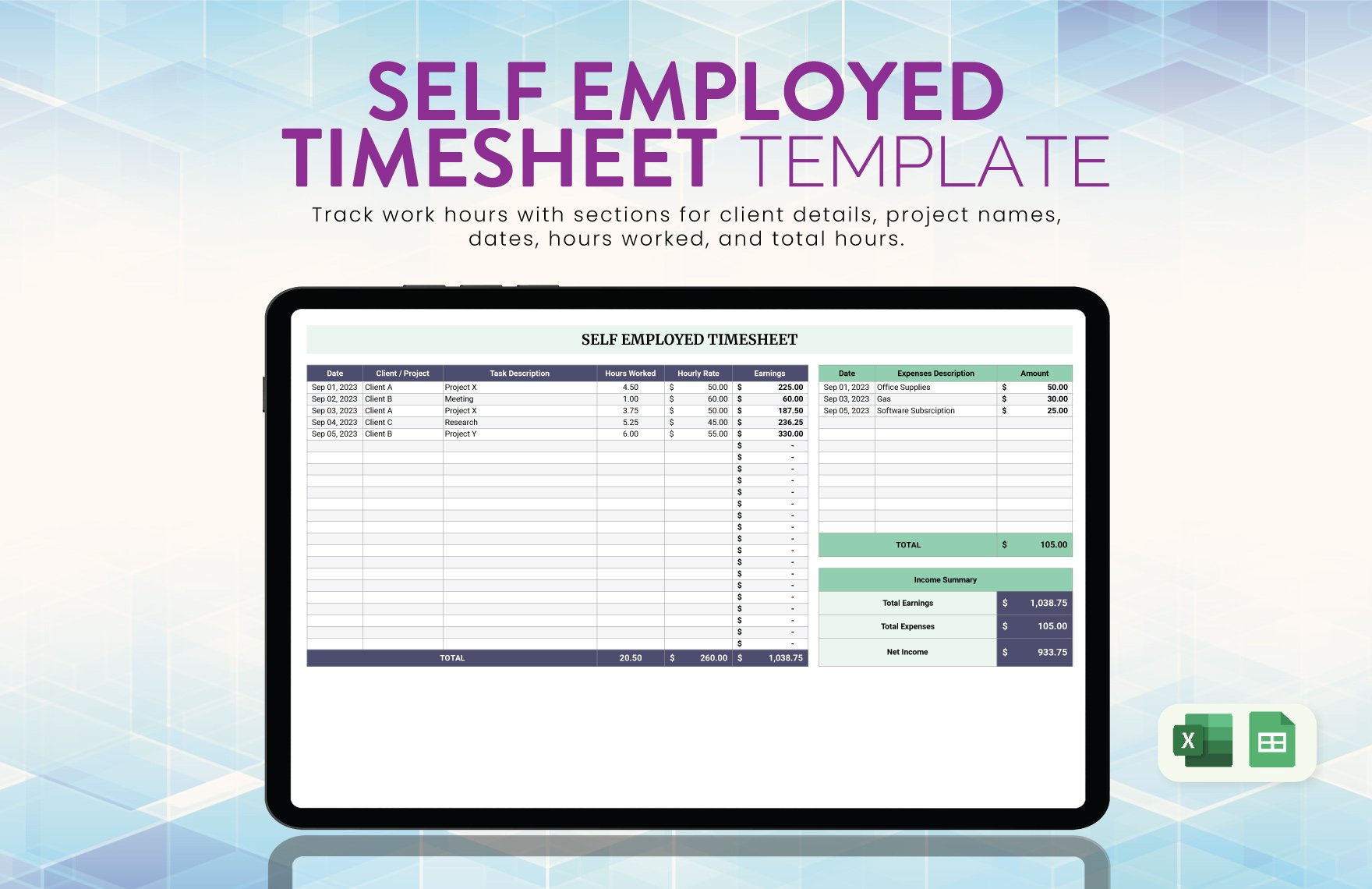Every employee is oriented about the specific time when he or she should come to work and until when he or she will work for the day. It is prevalent that every employee has their own work schedule and one way to track their attendance is through a time sheet. Record lates, early ins, and overtimes with our Time Sheet templates. Download these sheet templates for free in Apple Numbers, Pages, Microsoft Word, Excel, and PDF files. Produce them in A4 and US letter sizes and portrait orientation style. Distribute a time sheet to every employee of your company, let them submit it on time, and give them their deserved pay!
How to Organize a Time Sheet
A time sheet is a table that organizes a record of the amount of time spent on doing something. Companies use timesheets to keep track of the exact time their employees start and end their tasks or projects every workday. To be more specific, timesheets are used by payroll to compute the salary of each employee. The human resource and management also use this sheet to note exemplary employees in their attendance and the whole management team uses it to meet deadlines, maintain its budget, and achieve business success through effective time management. Below are guide steps and tips to help you organize one.
1. Create a Field for the Employee Identity Details
Reserve a space above the time sheet wherein employees will sign in their identification details: their names, identification number, the department where he or she belongs, his or her position and supervisor in that department.
Each employee should have their individual time sheets and this text field where you are theirs to fill out. Appropriating this helps create a more organized system of timekeeping because all their daily time in and out details are all gathered in one sheet.
2. Make the Time Table
Decide what computer application you will use to make this time sheet. Insert a table from its tool menu of then specify the number of rows and columns you want for the time table. You can input an initial count for it and just add when further details are needed for the chart. Designate labels in the top rows of the table. Indicate date, time in, time out, rendered time, the regular number of work hours, overtime, and the total hours the employee has worked for that day. When filled out, these details will help the payroll to have a detailed track record of the company’s staff attendance which will determine the amount they will receive as their salary for the upcoming payday.
3. Allocate a Signature Corner
After this time sheet is filled out by every employee, the timesheet will not be accepted or be considered as valid and correct if it will not be signed by his or her supervisor. You can add another column for the supervisor’s signature or you can let the supervisor sign after everything below the table.
It will be helpful for employees if you will add instructions for filling out the time sheet above the time table. Specify if the signing of the sheet should be done on a daily basis or every time in and out. Of course, it will also depend on the structure of the timetable and in what way the supervisor wants it to be. The human resource should find the more preferable way of doing this to keep the accuracy of the time record since this a sheet that can be manipulated in any way.
4. Settle Your Company Information
Since this will be used as the official time sheet of all the employees in your company, add some details that will make the sheet look more authentic. Compose a letterhead and footer containing your company information. Place your company logo on the sheet. You can supplement it with the company slogan, address, and contact information. Settle them on the letterhead or footer accordingly.
